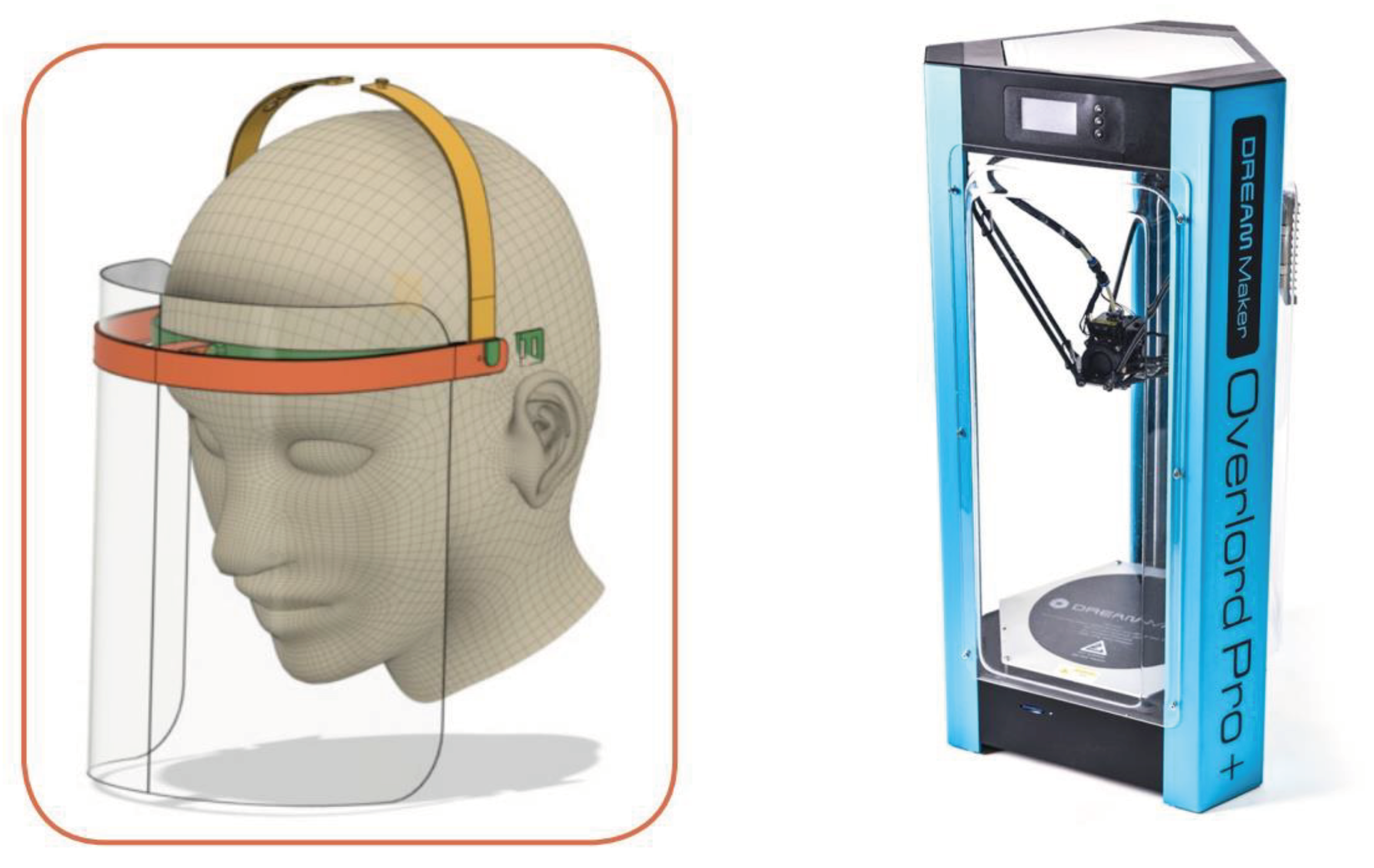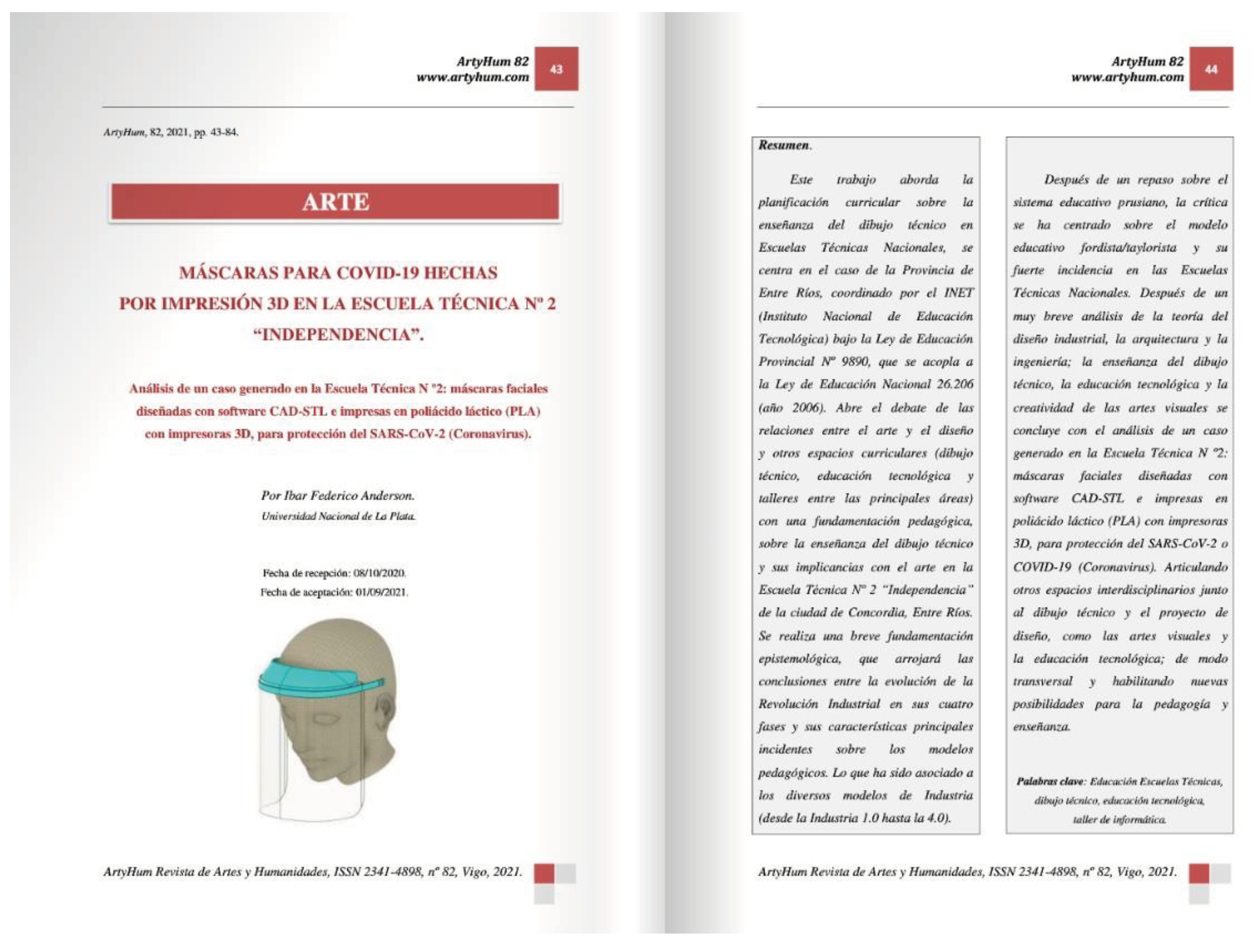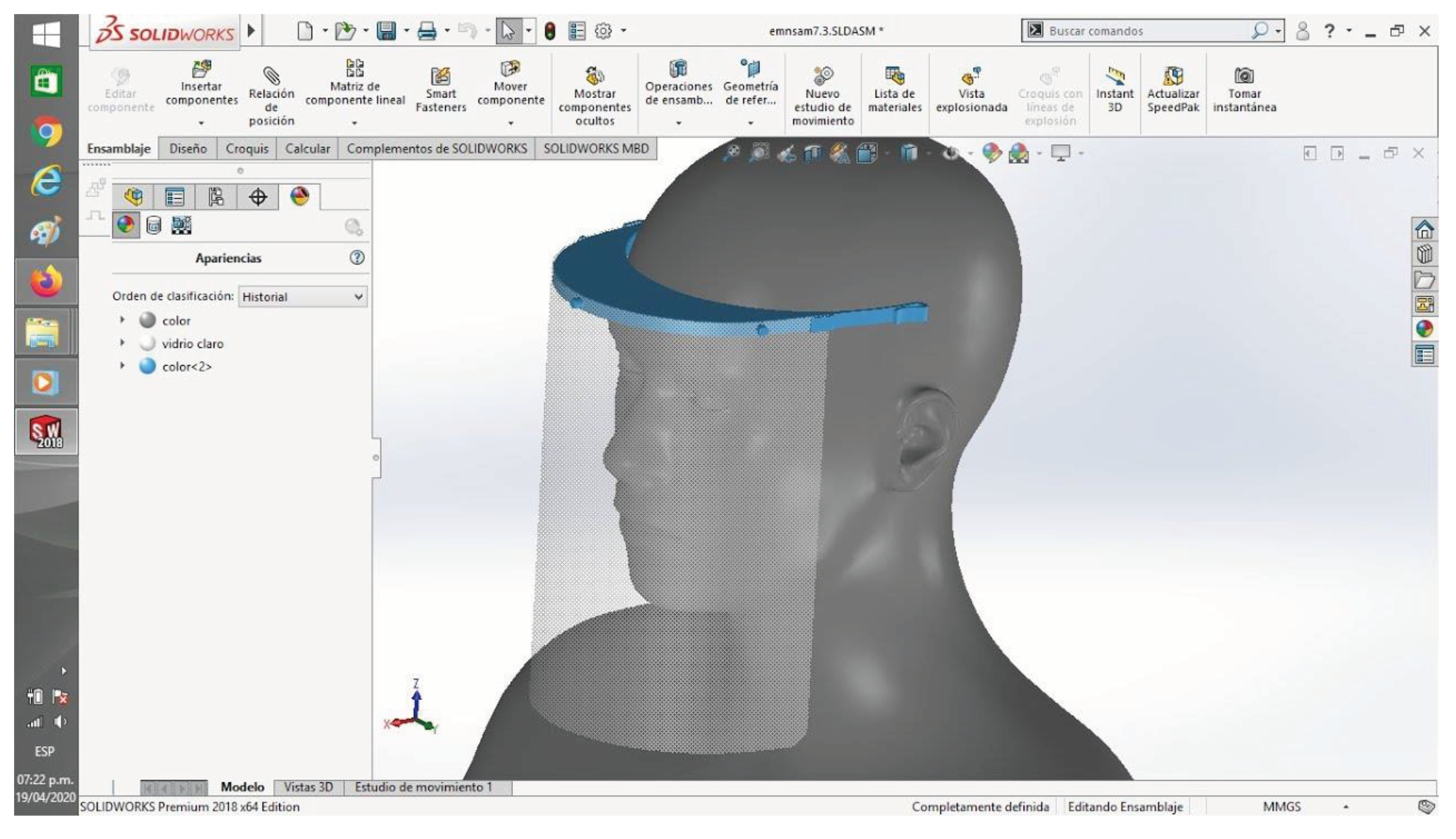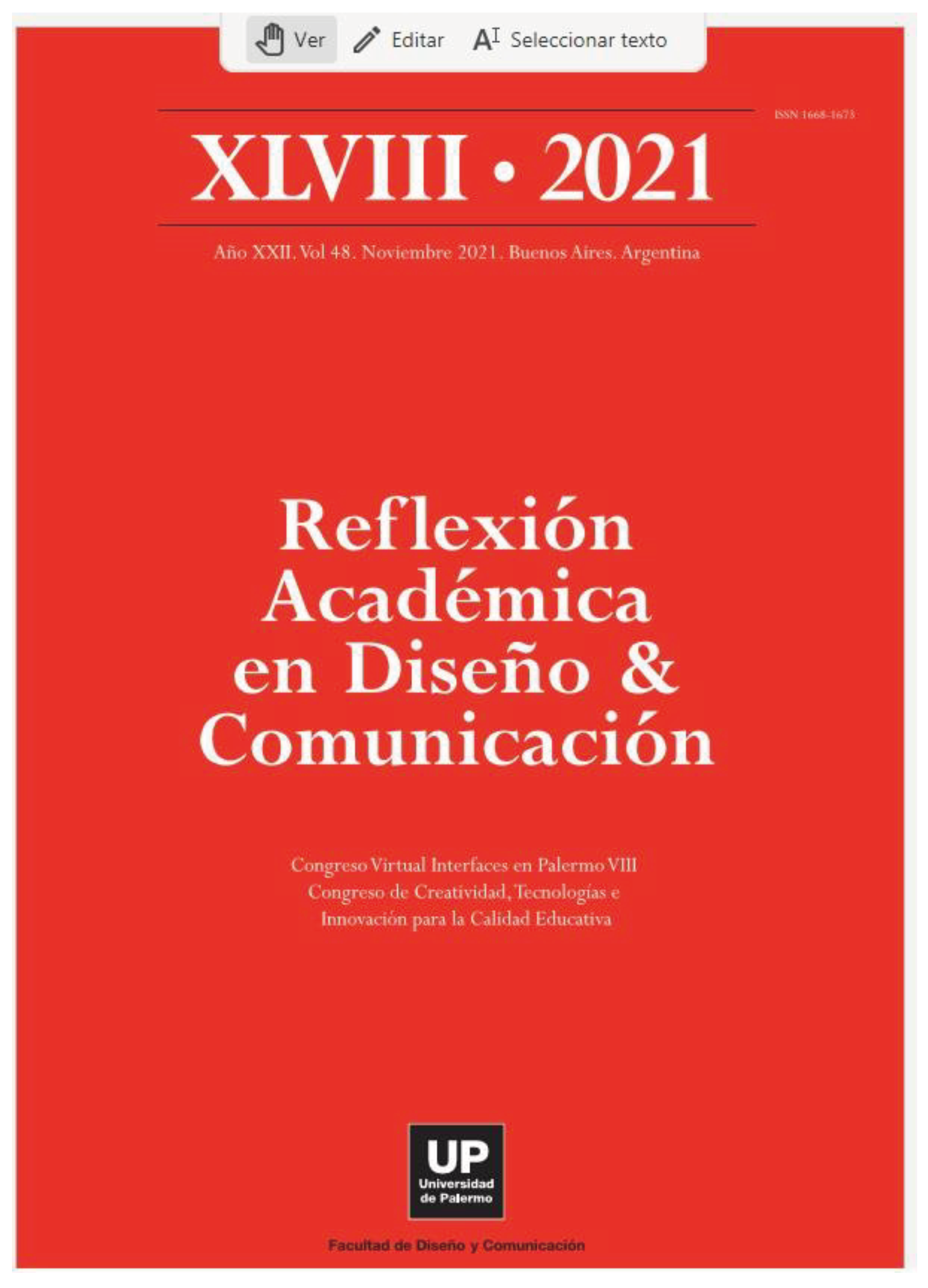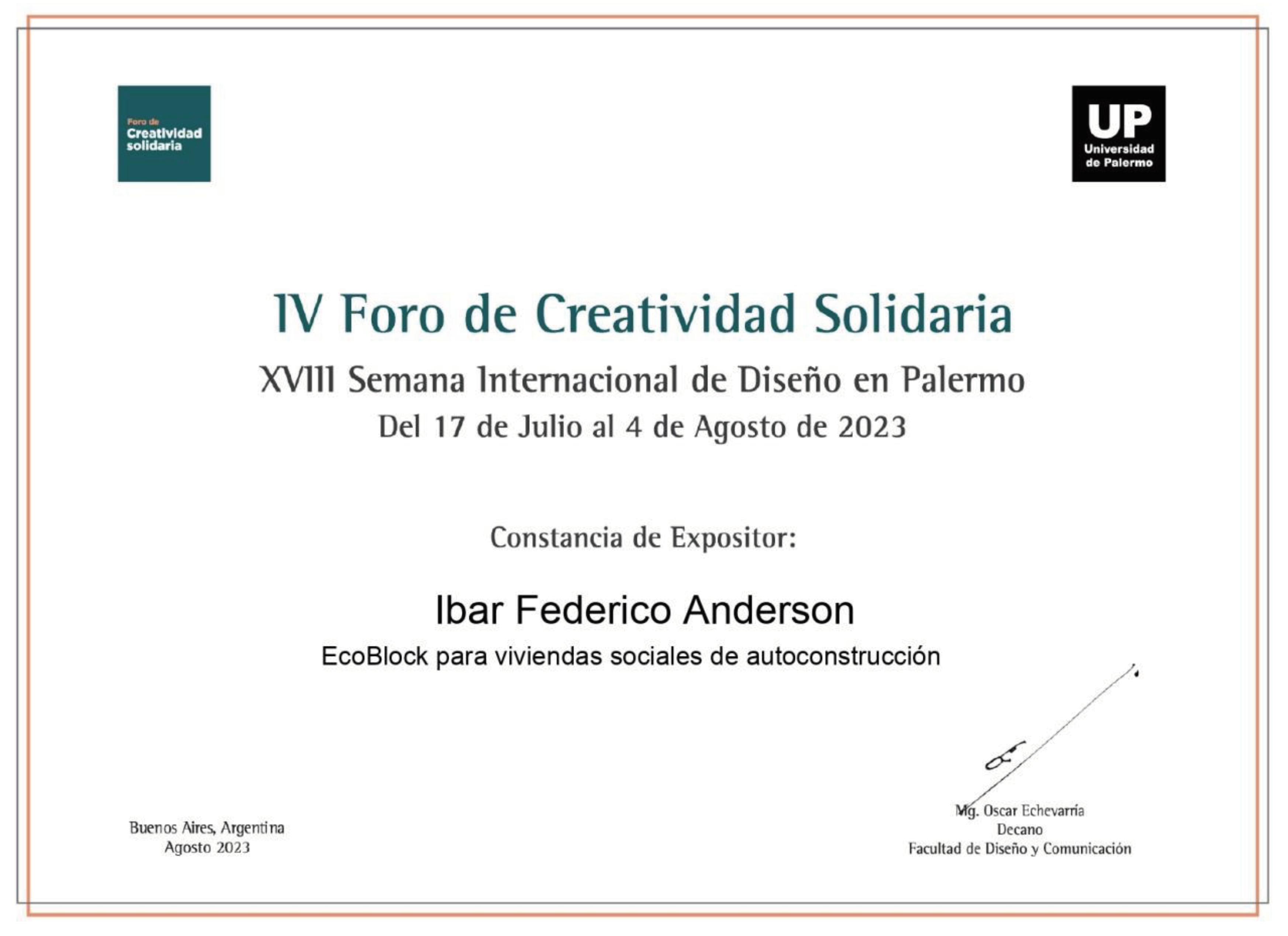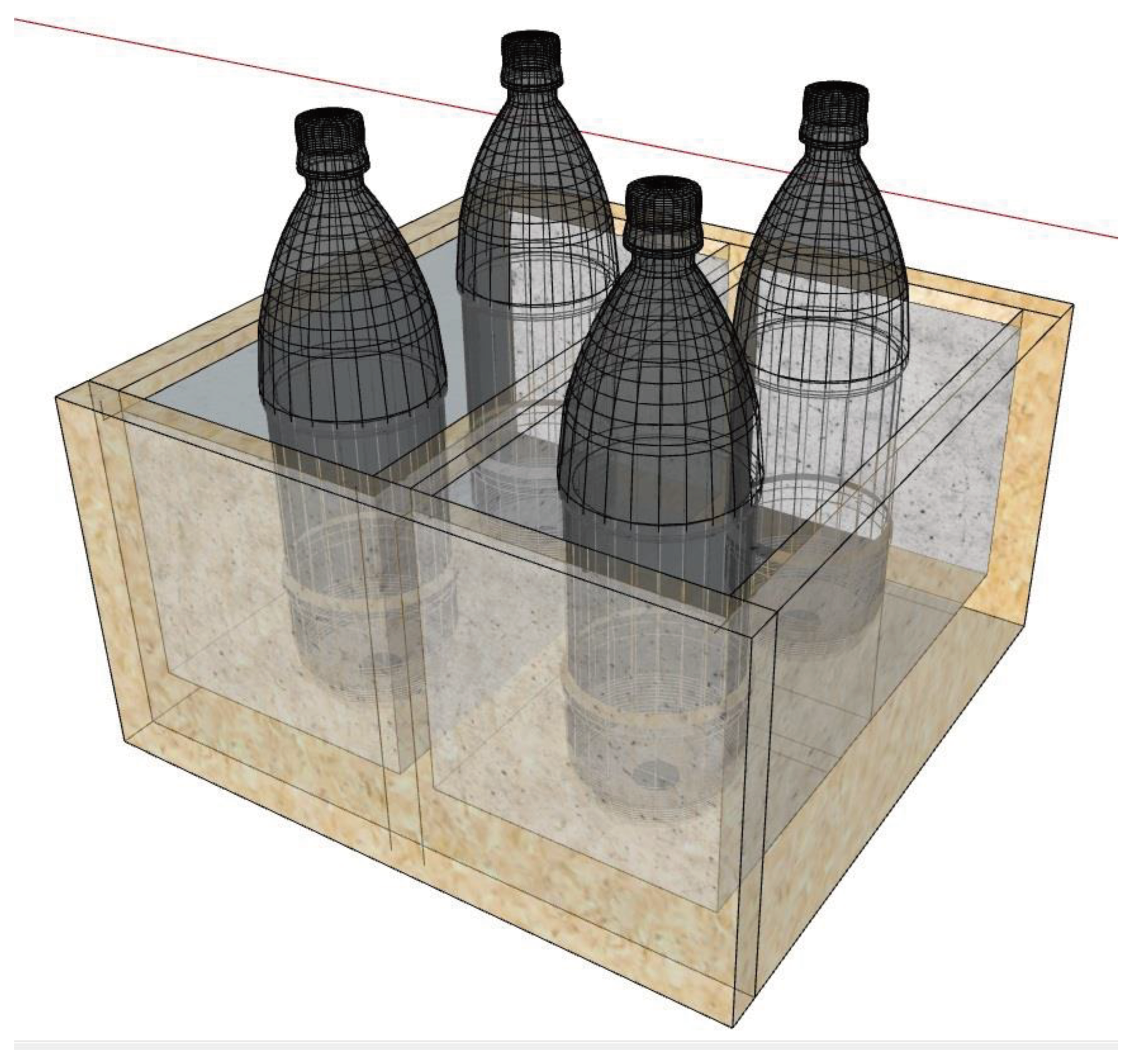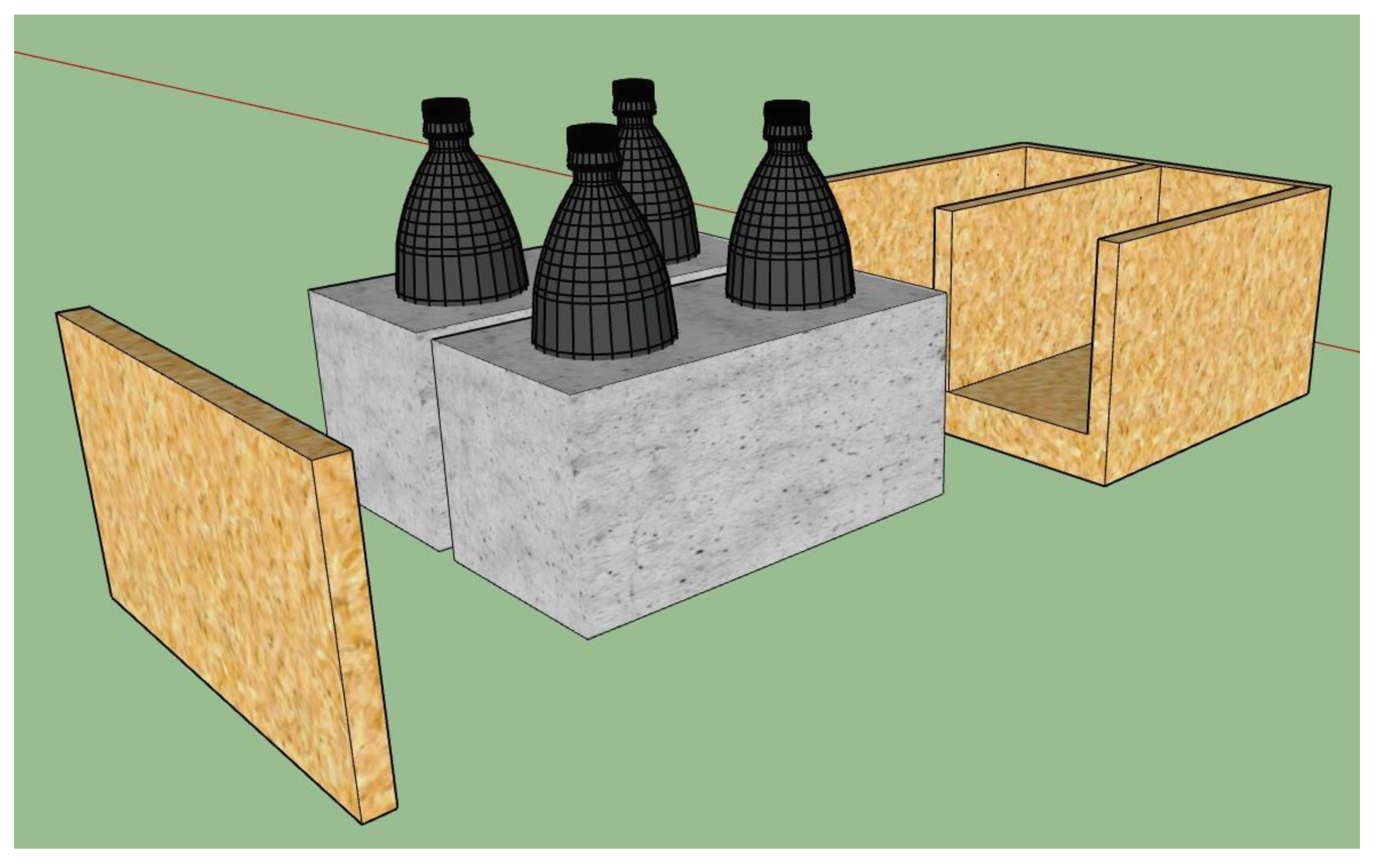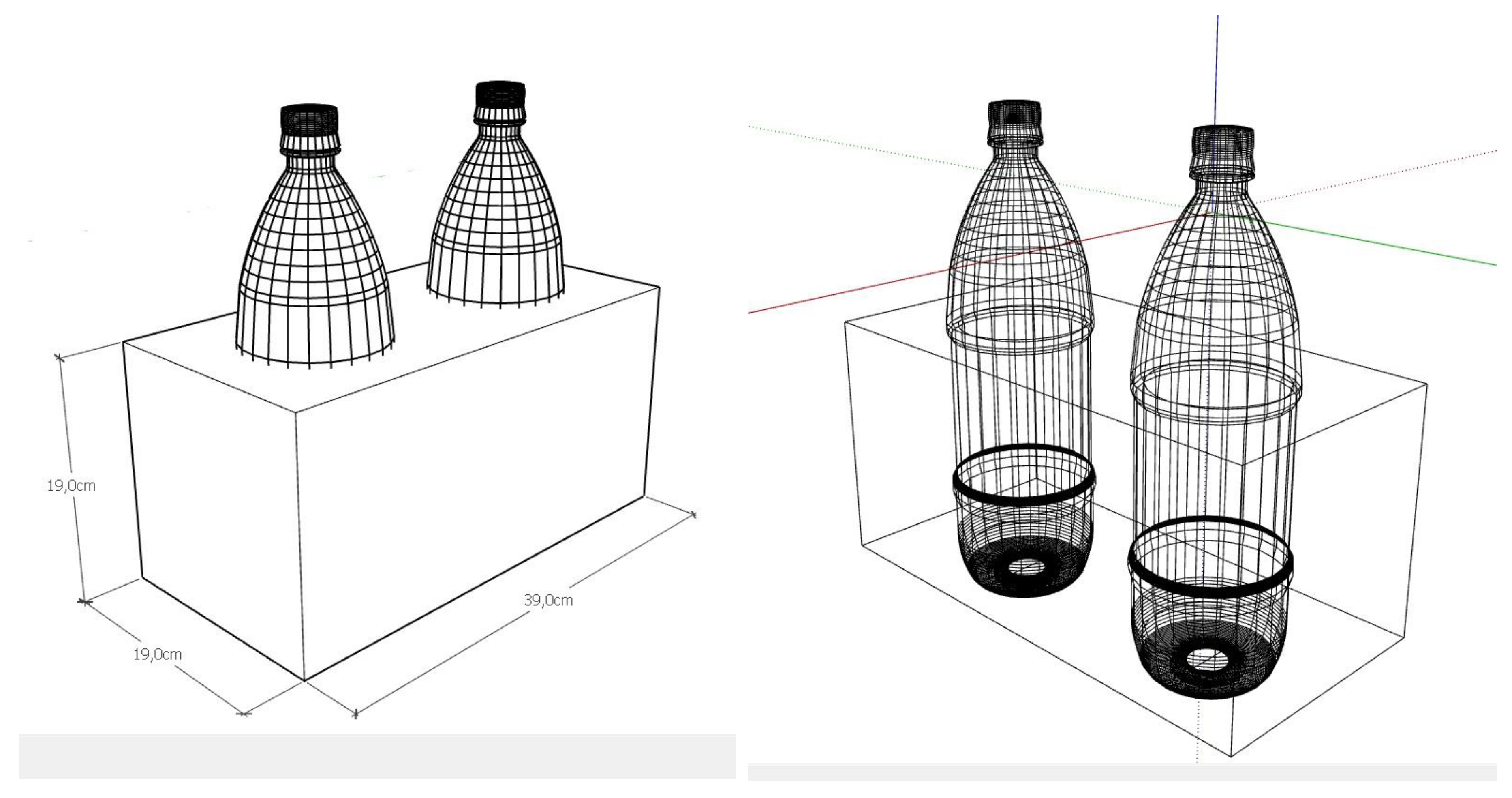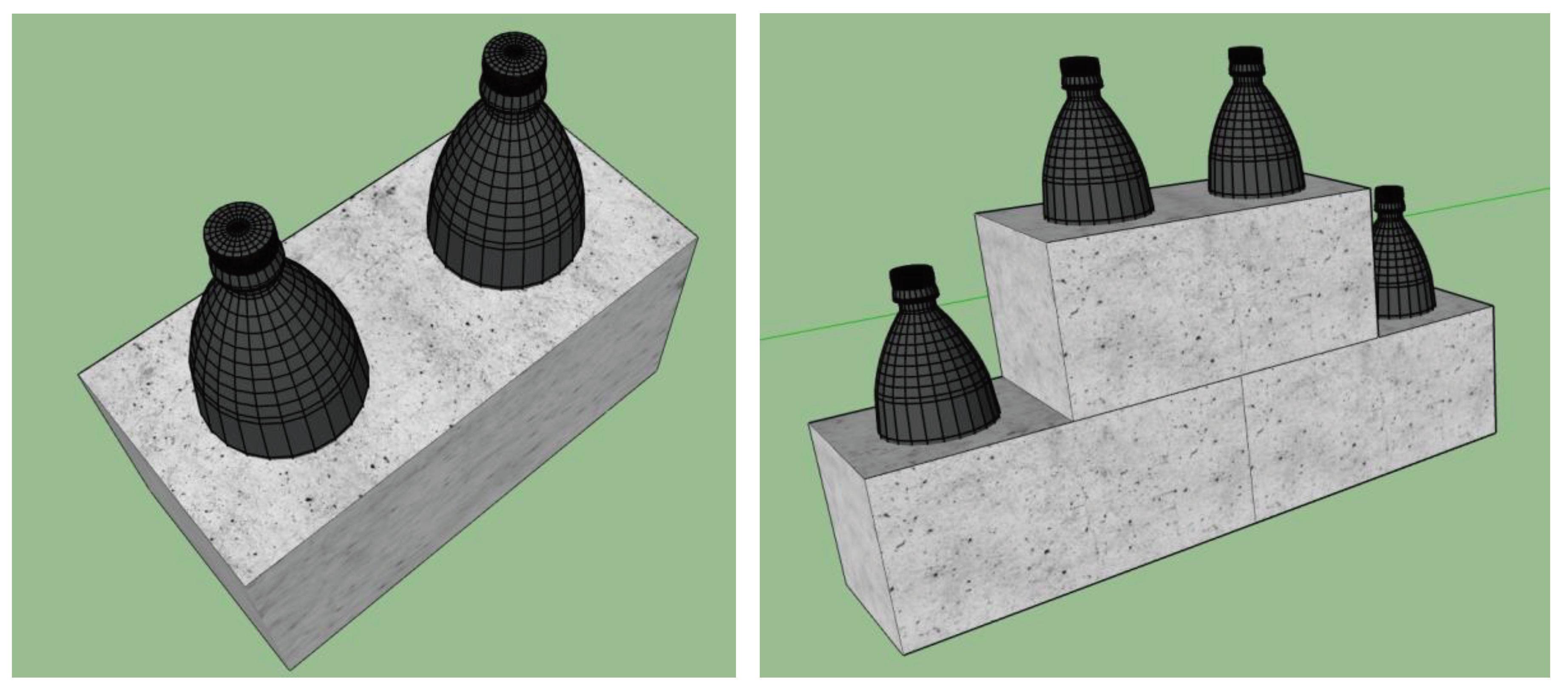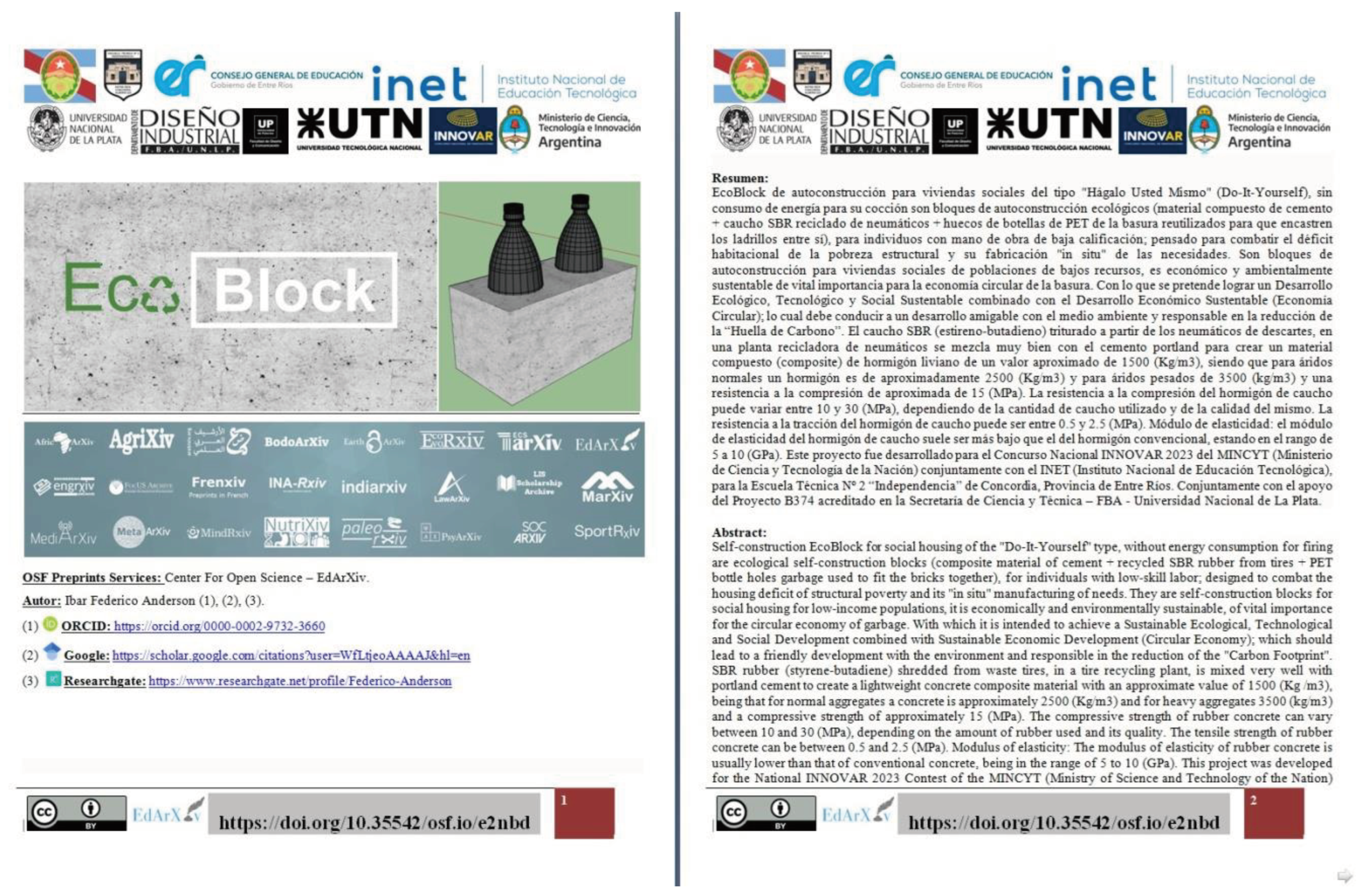Submitted:
25 February 2024
Posted:
26 February 2024
You are already at the latest version
Abstract
Keywords:
Essay to build a historical, economic-productive and legal theoretical framework of the origin and formation of Secondary Technical Schools in Europe, North America and the Argentine Republic
Introduction in Argentina
Normative introduction to Technical Education at the Technical School No. 2 “Independencia” of Concordia, Entre Ríos, Argentine Republic. Its regulations
We will analyze five (5) case studies generated in EET No. 2 “Independencia” of the city of Concordia, Province of Entre Ríos, Argentine Republic
Case study No. 2: TURBO: air extractor/blower for environments contaminated by COVID-19
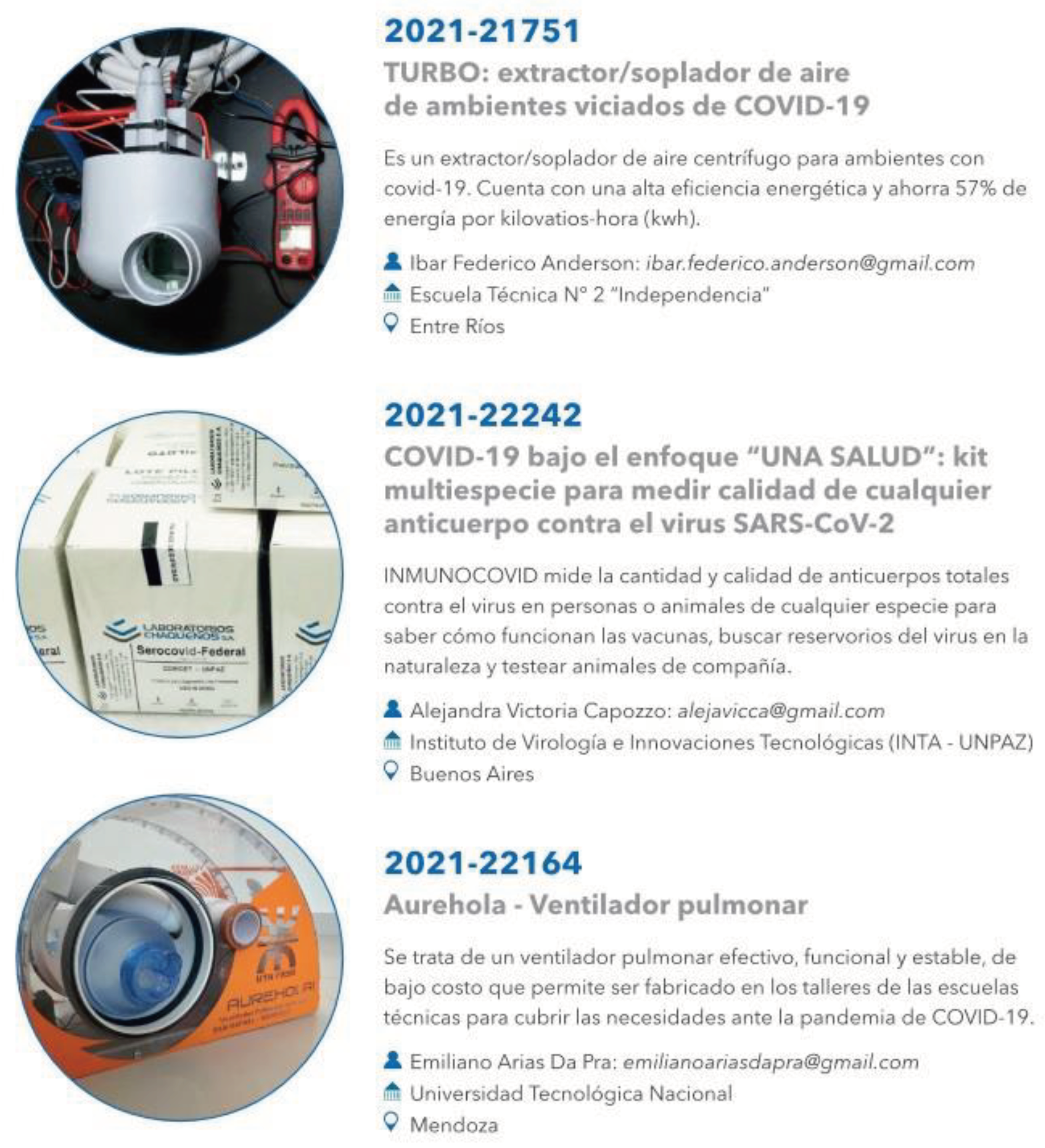
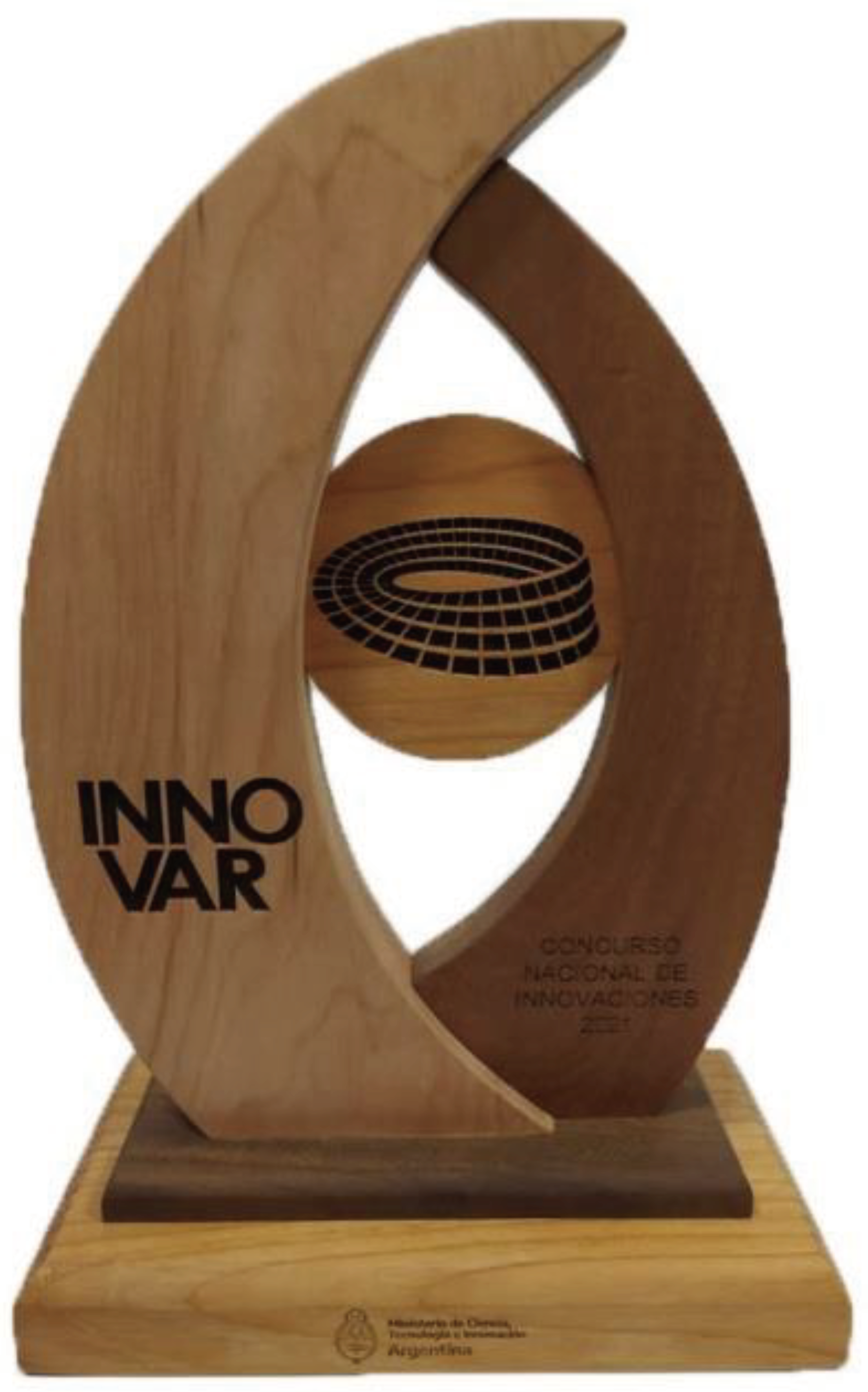
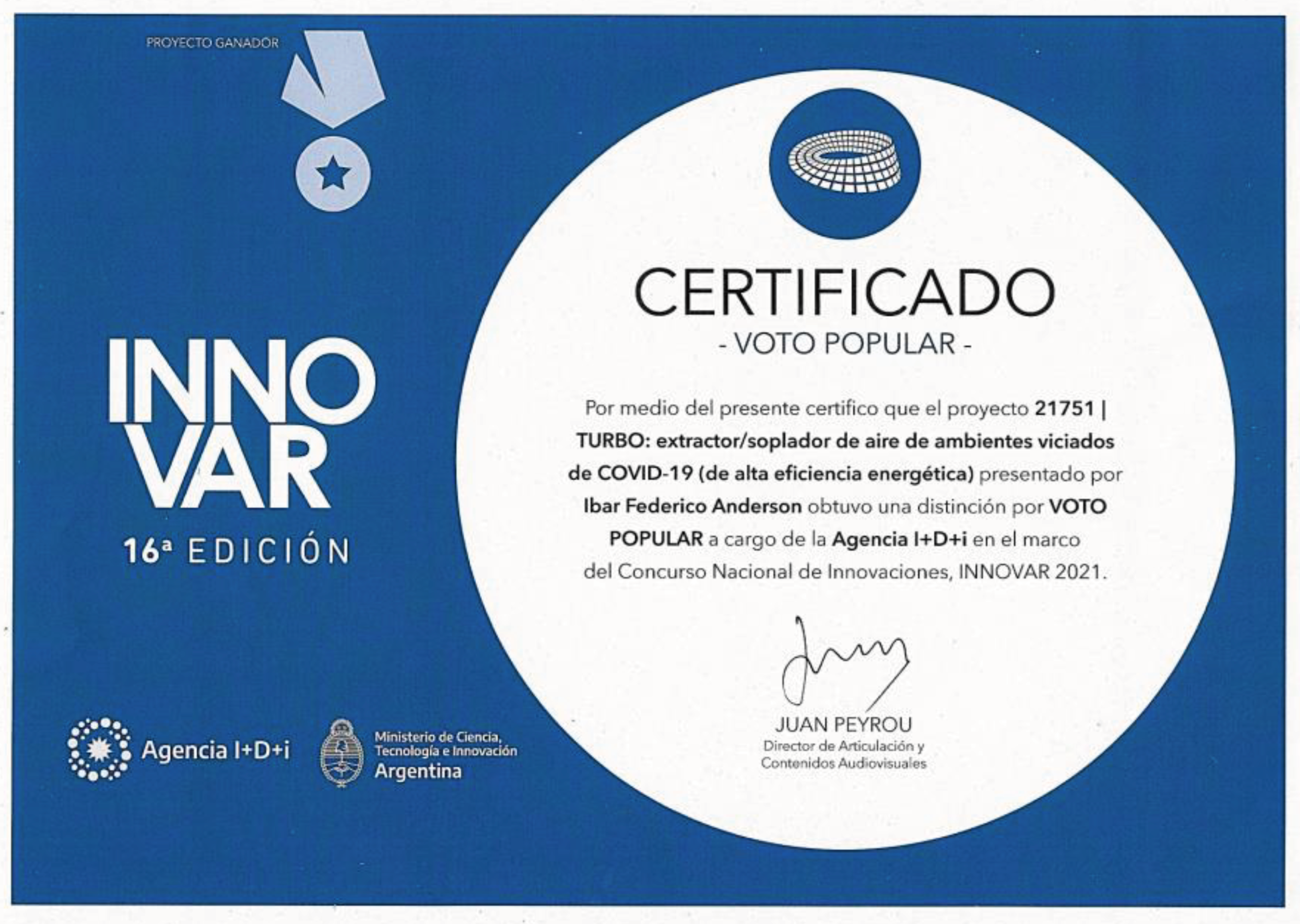
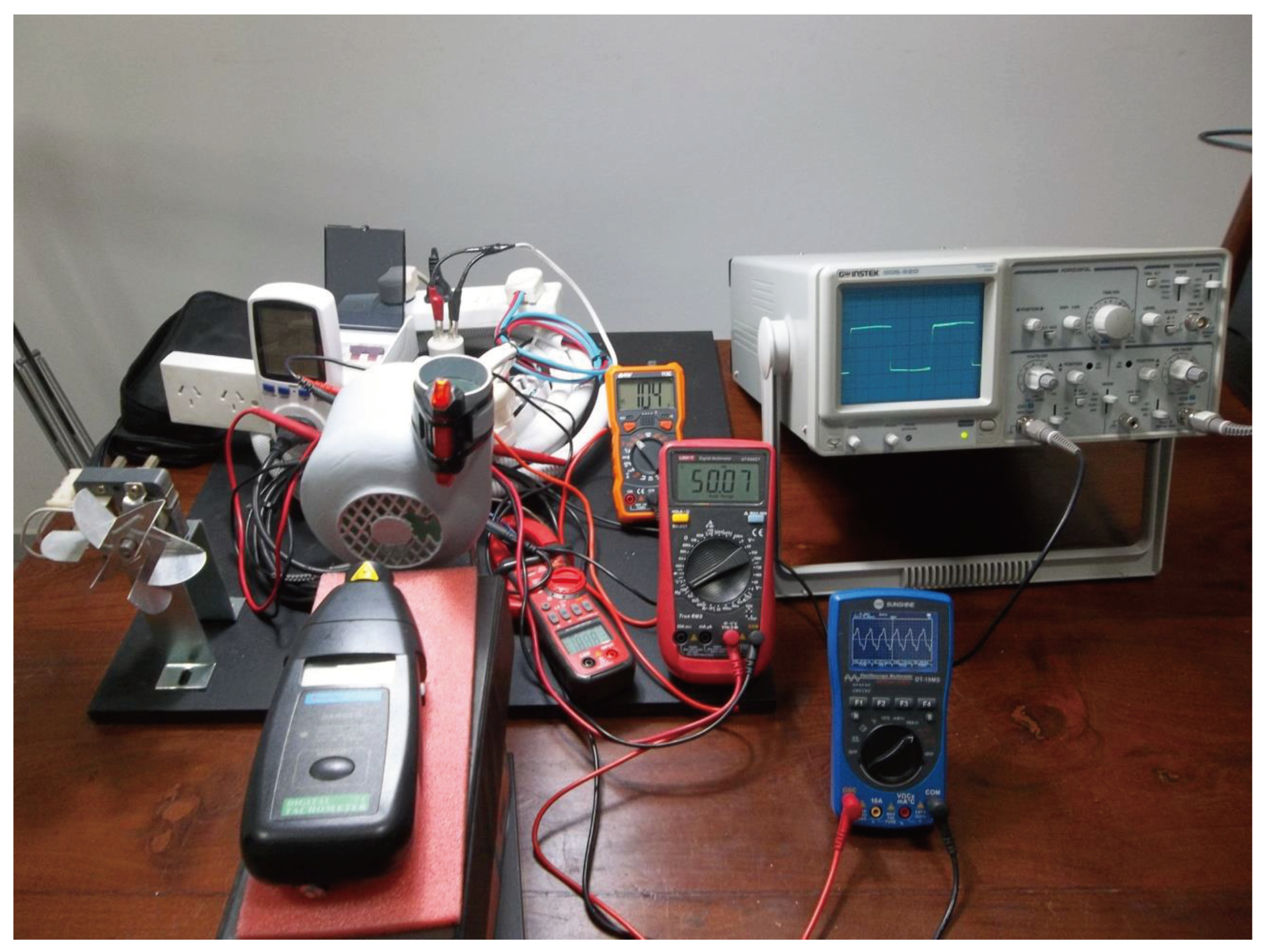
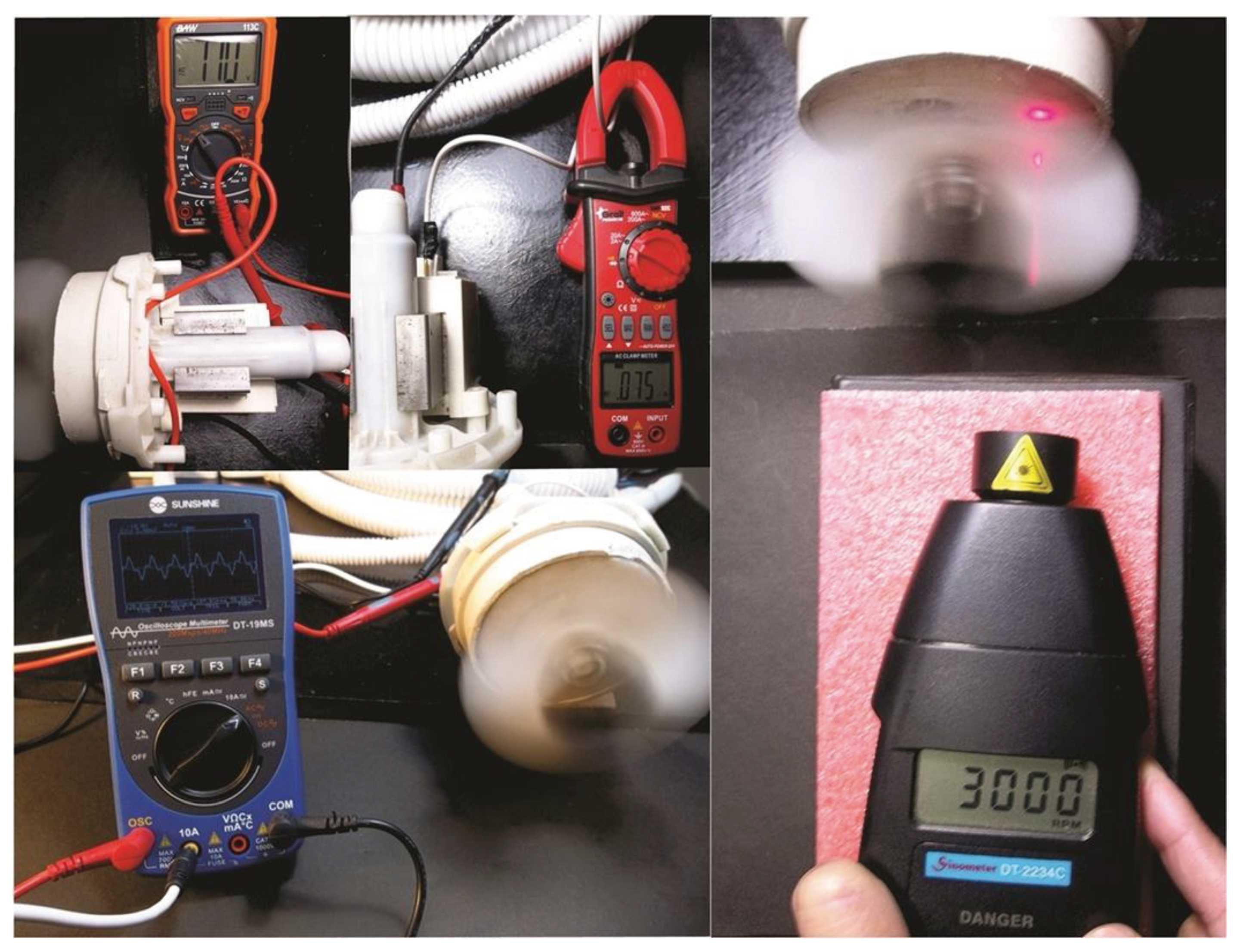
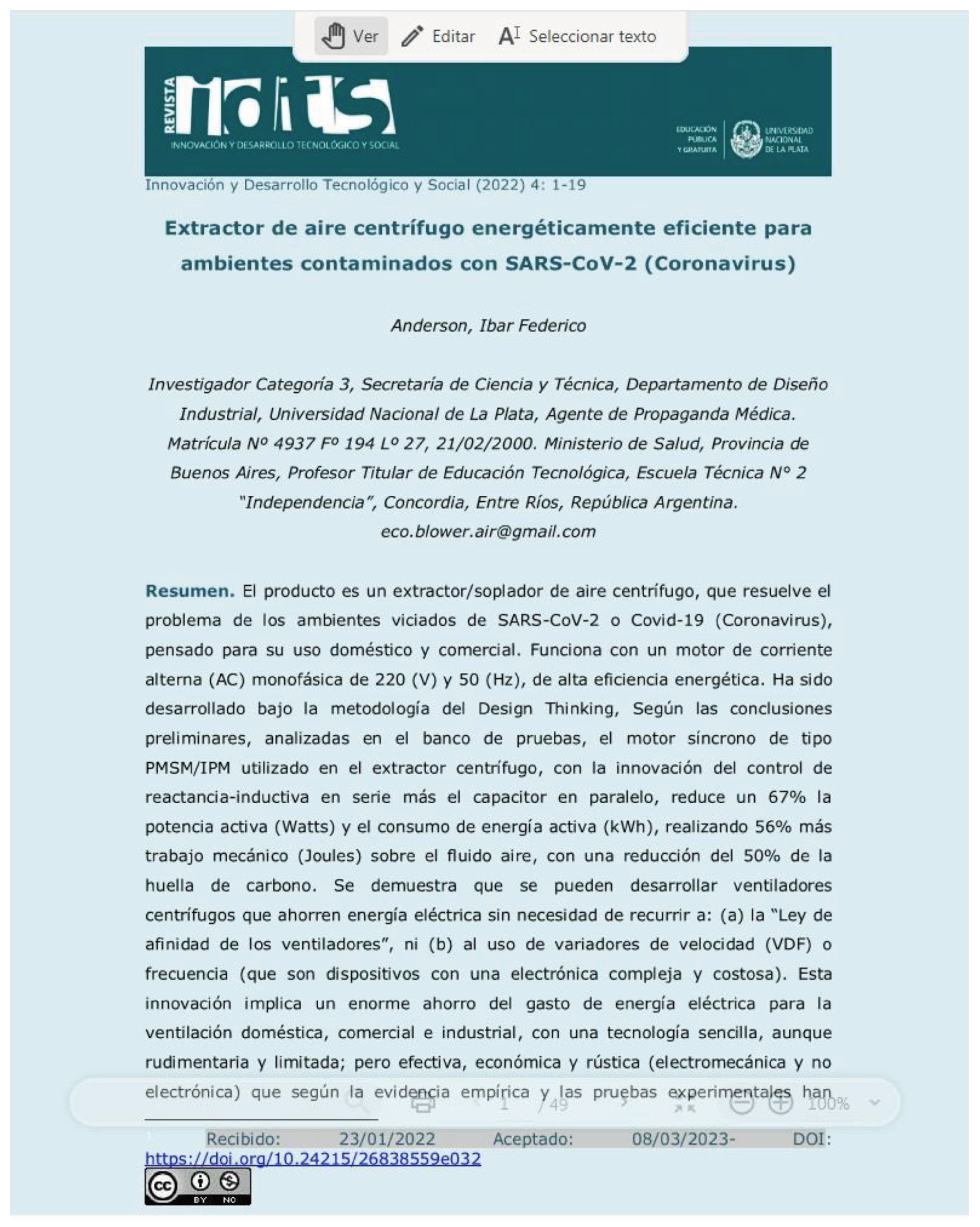
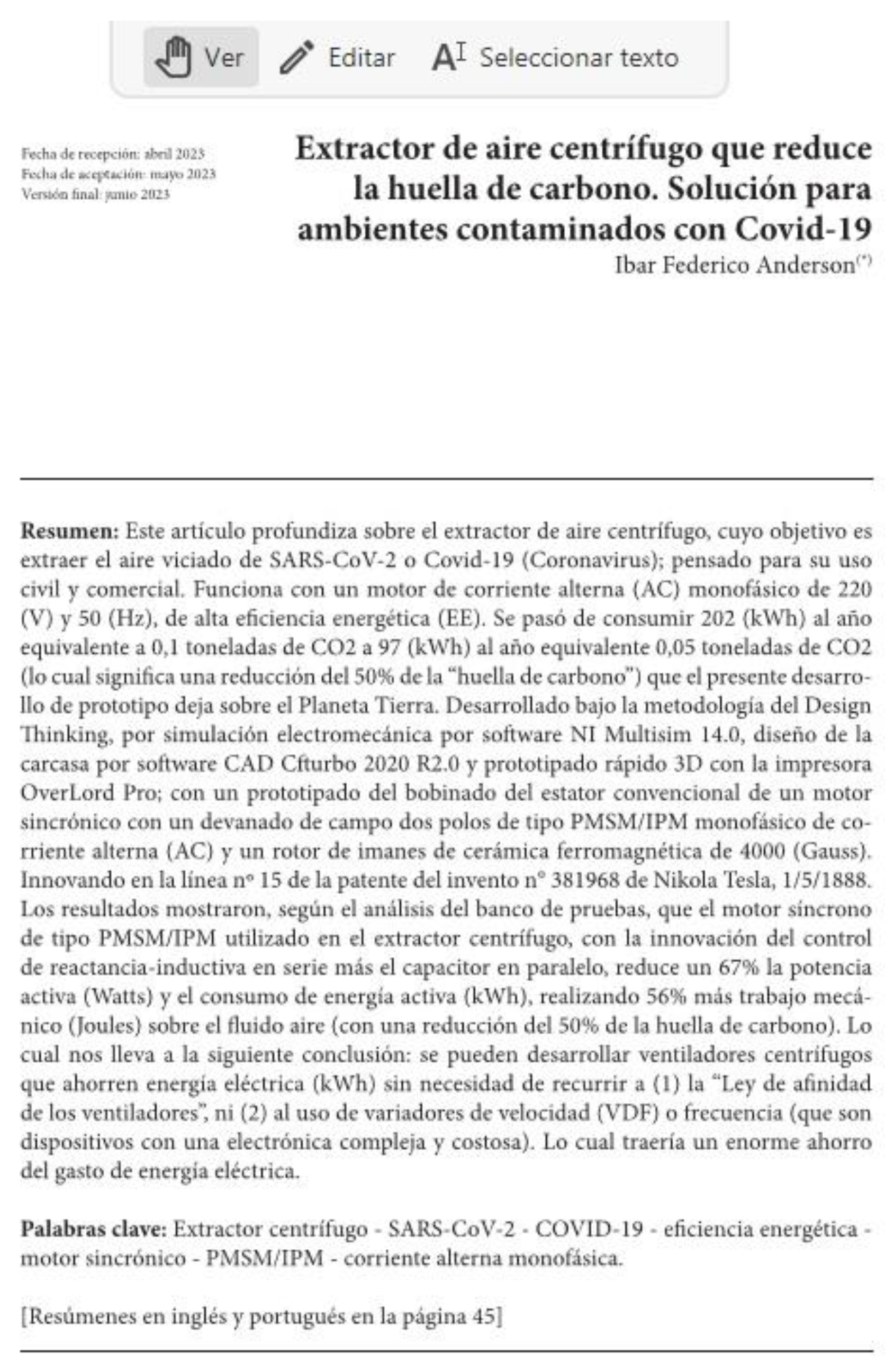
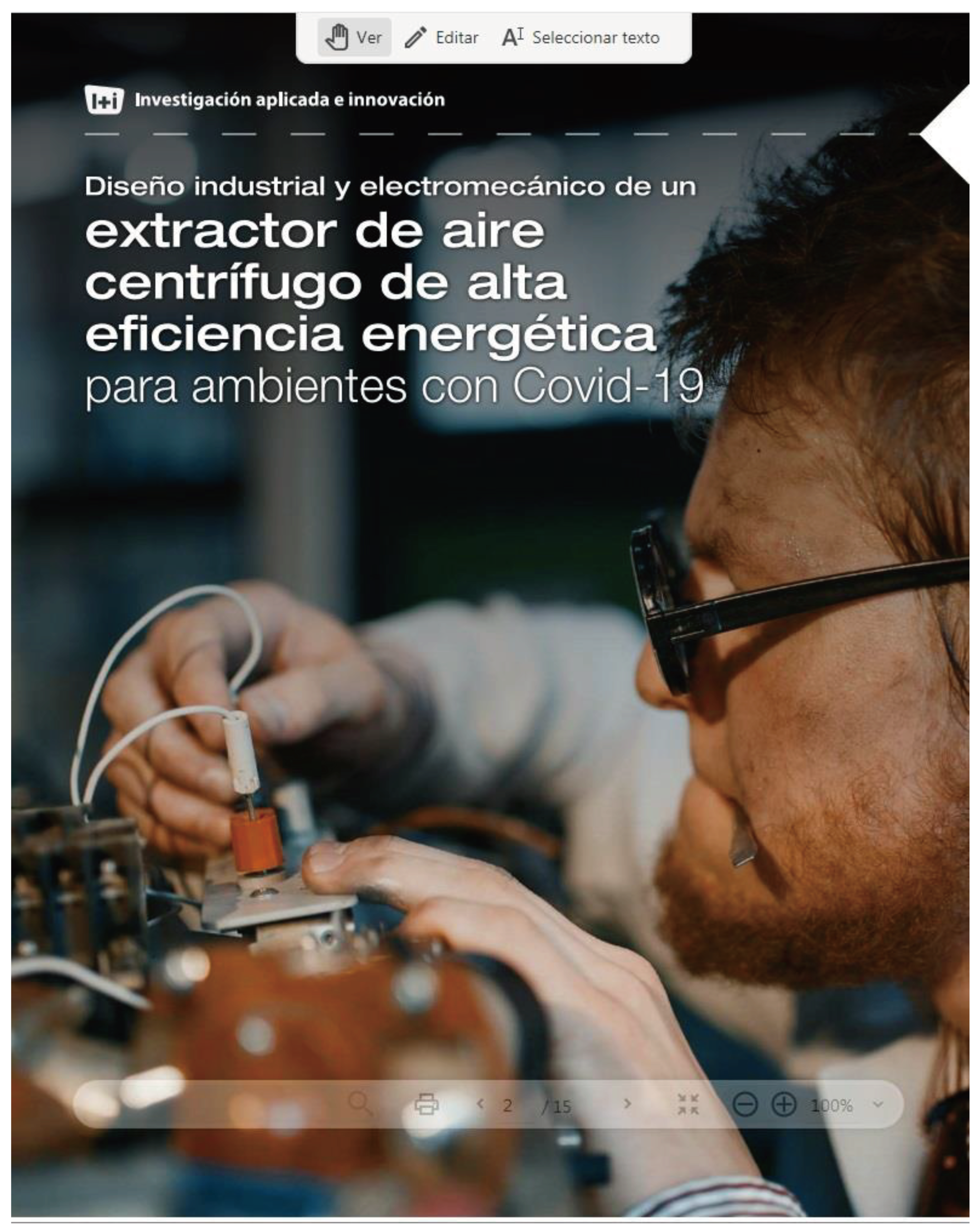
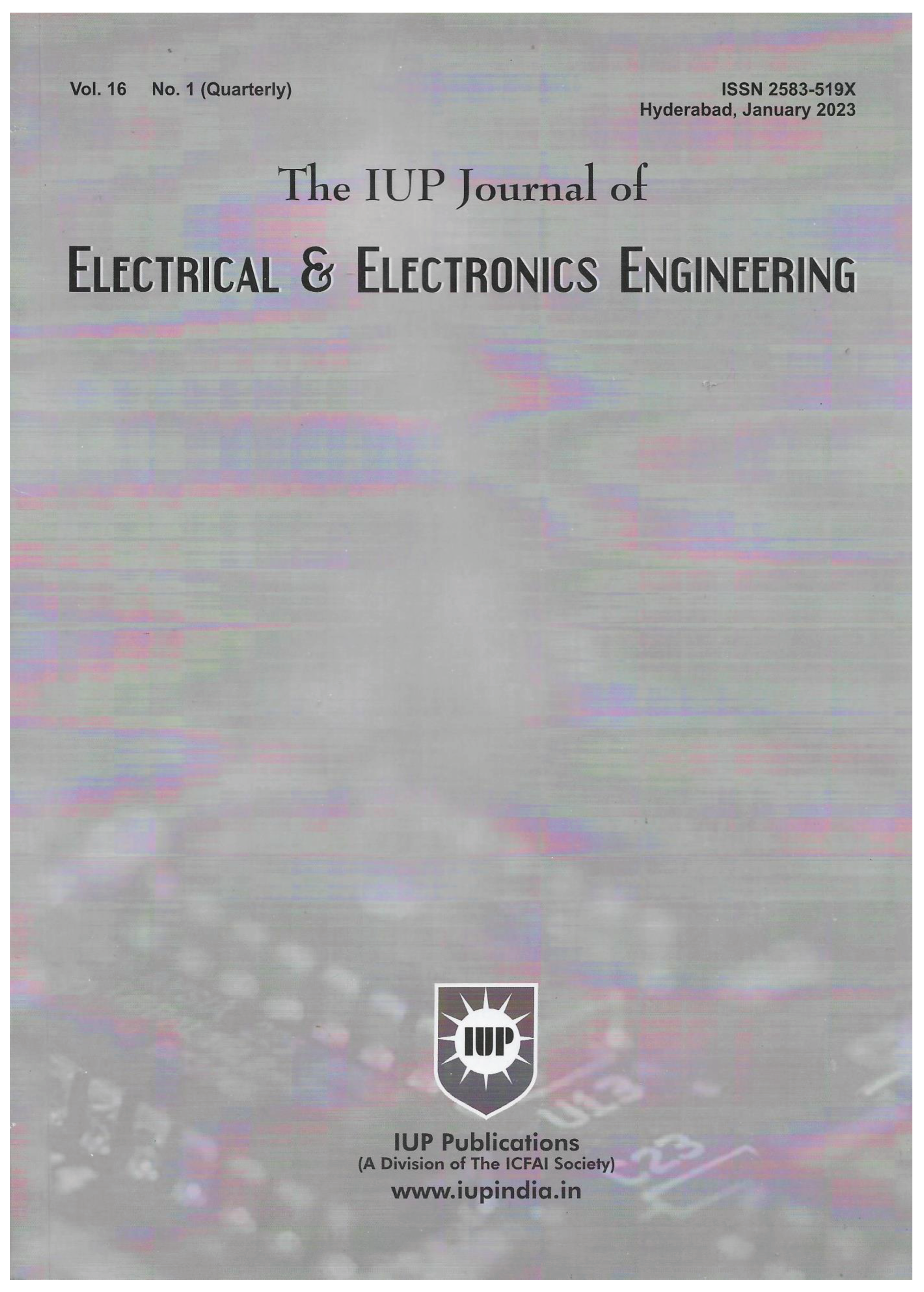
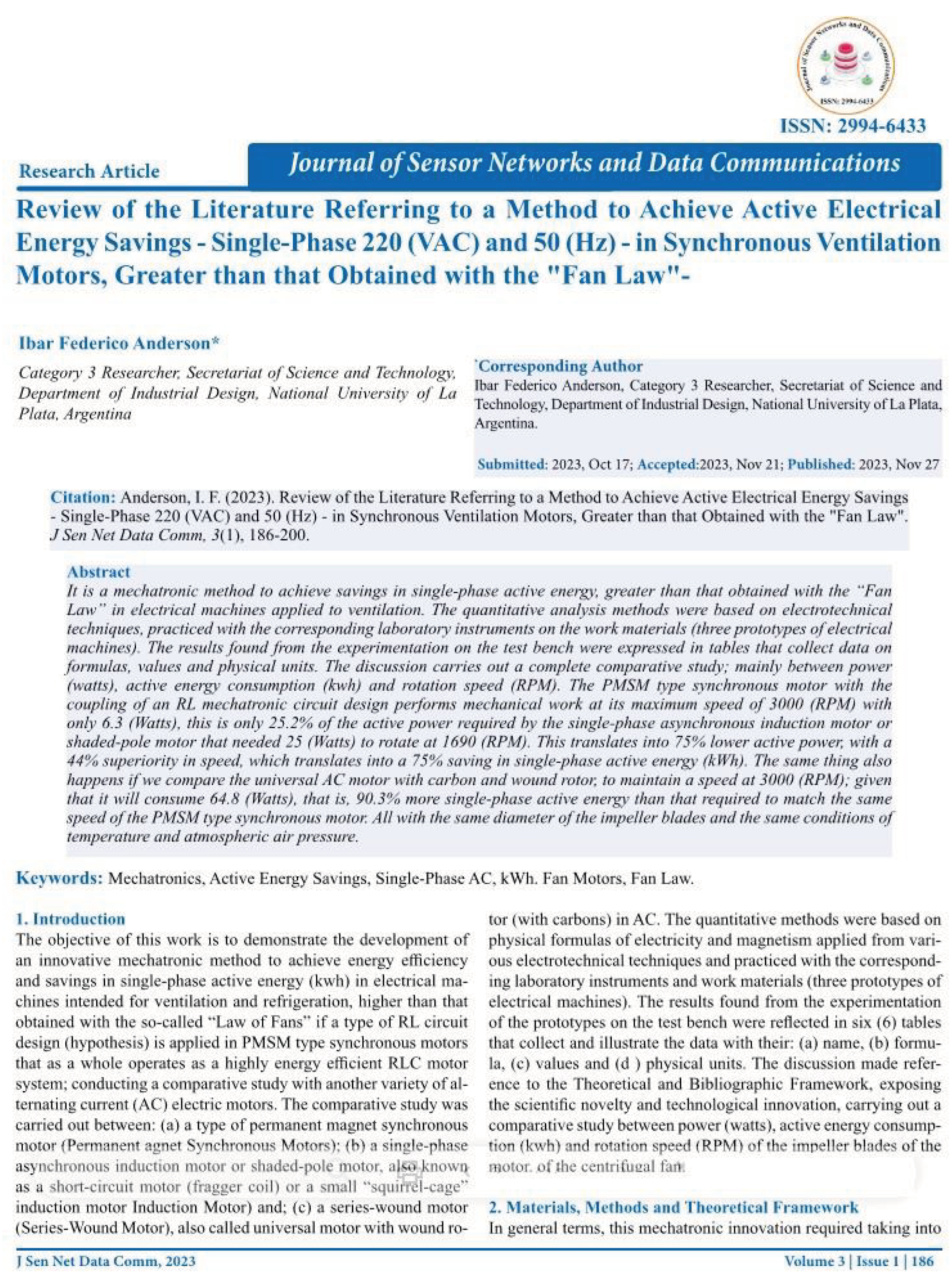
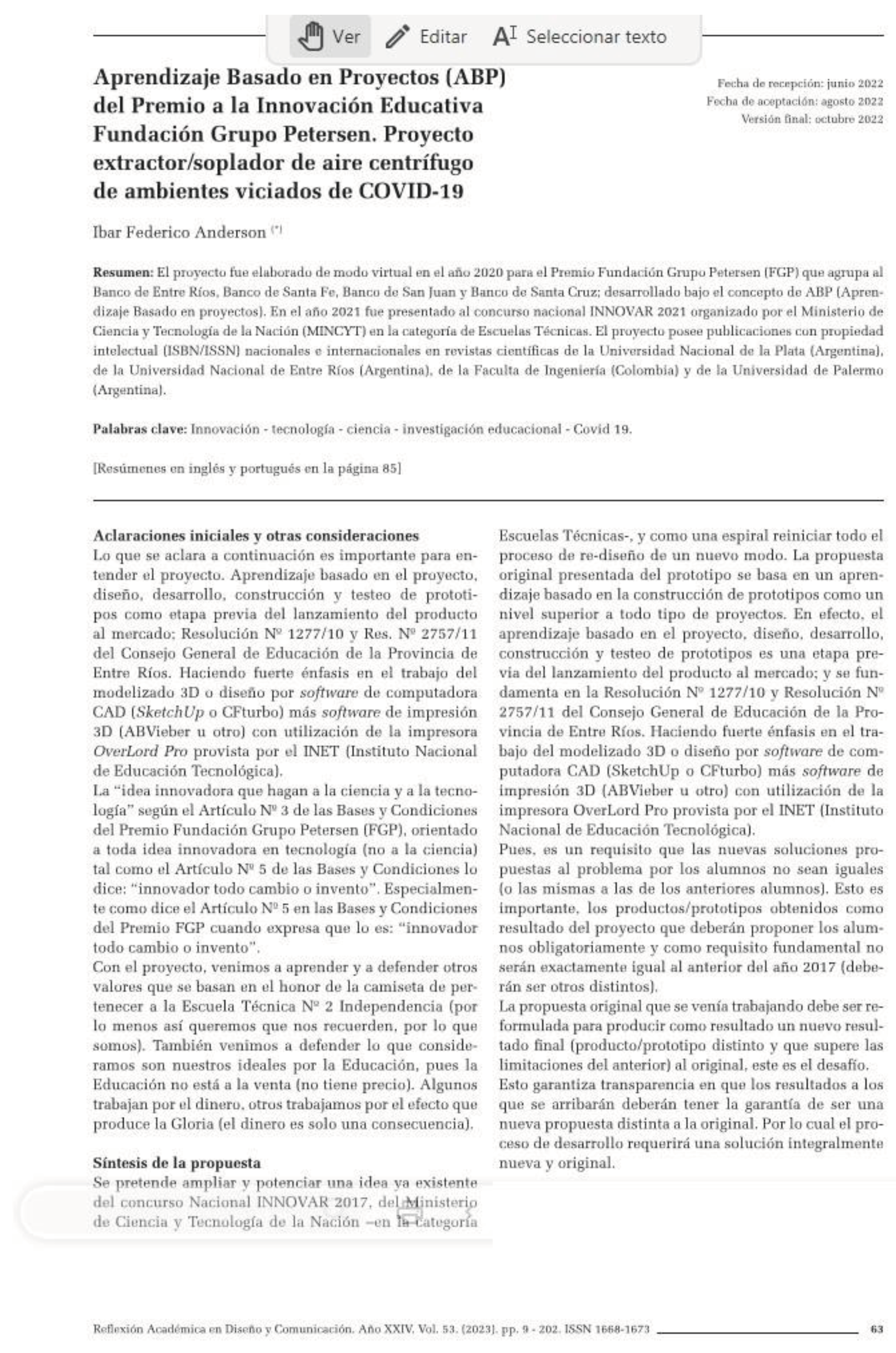
Case study No. 3: ROBOT-T2: Educational Robot Made by Students and Teachers of the Technical School No. 2 (EET No. 2) “Independencia”, Concordia, Entre Ríos, Argentine Republic
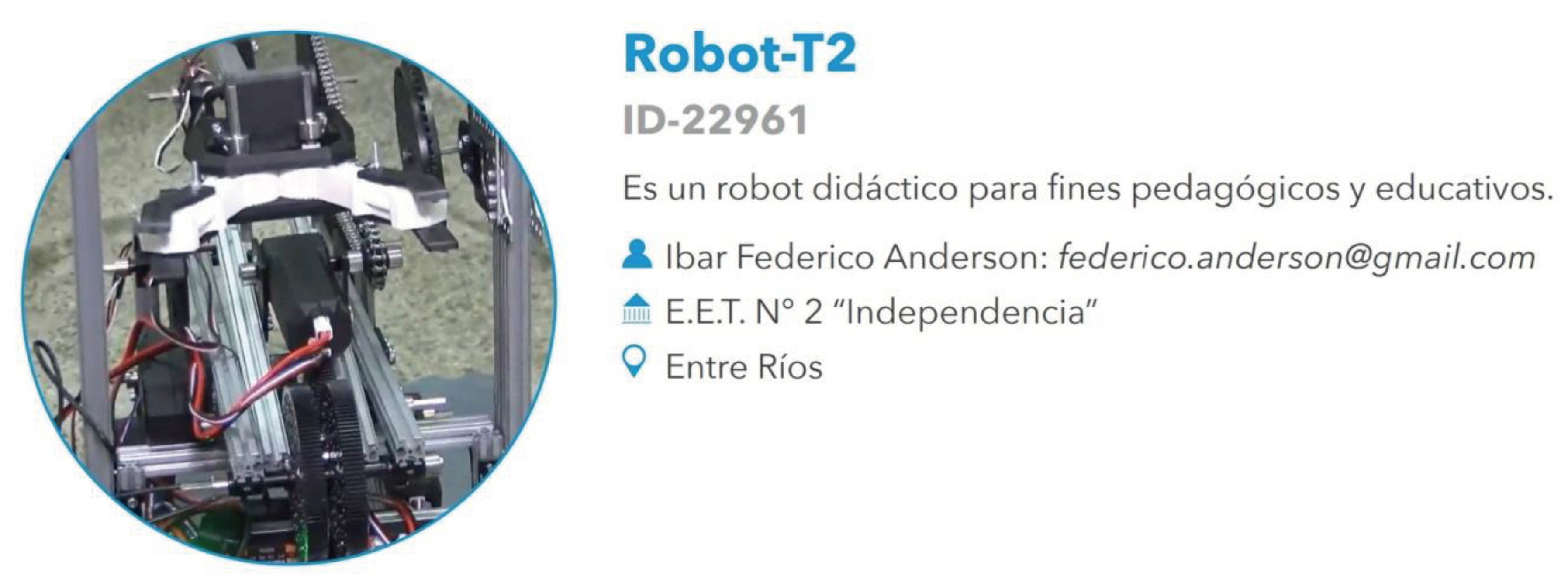
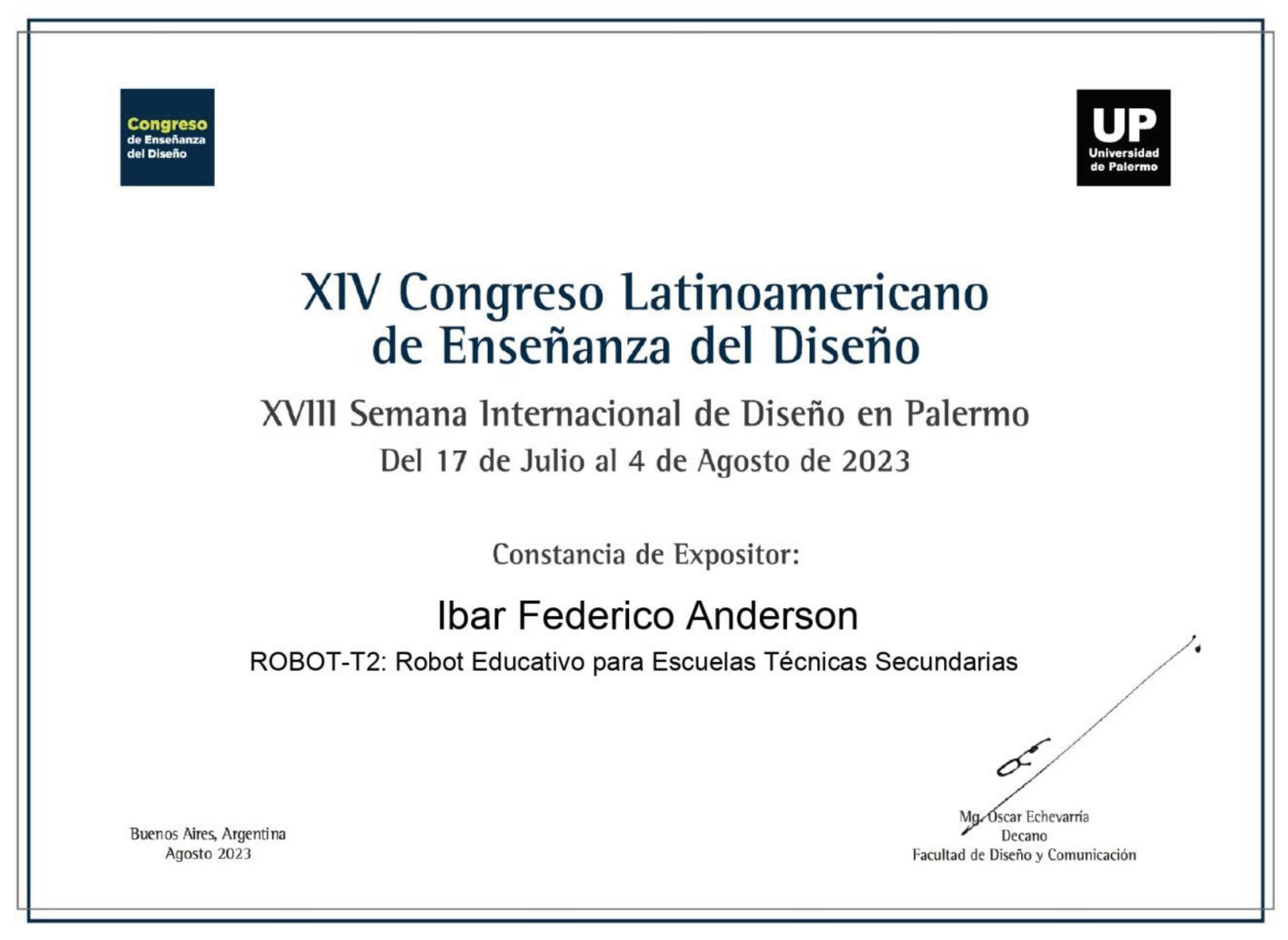
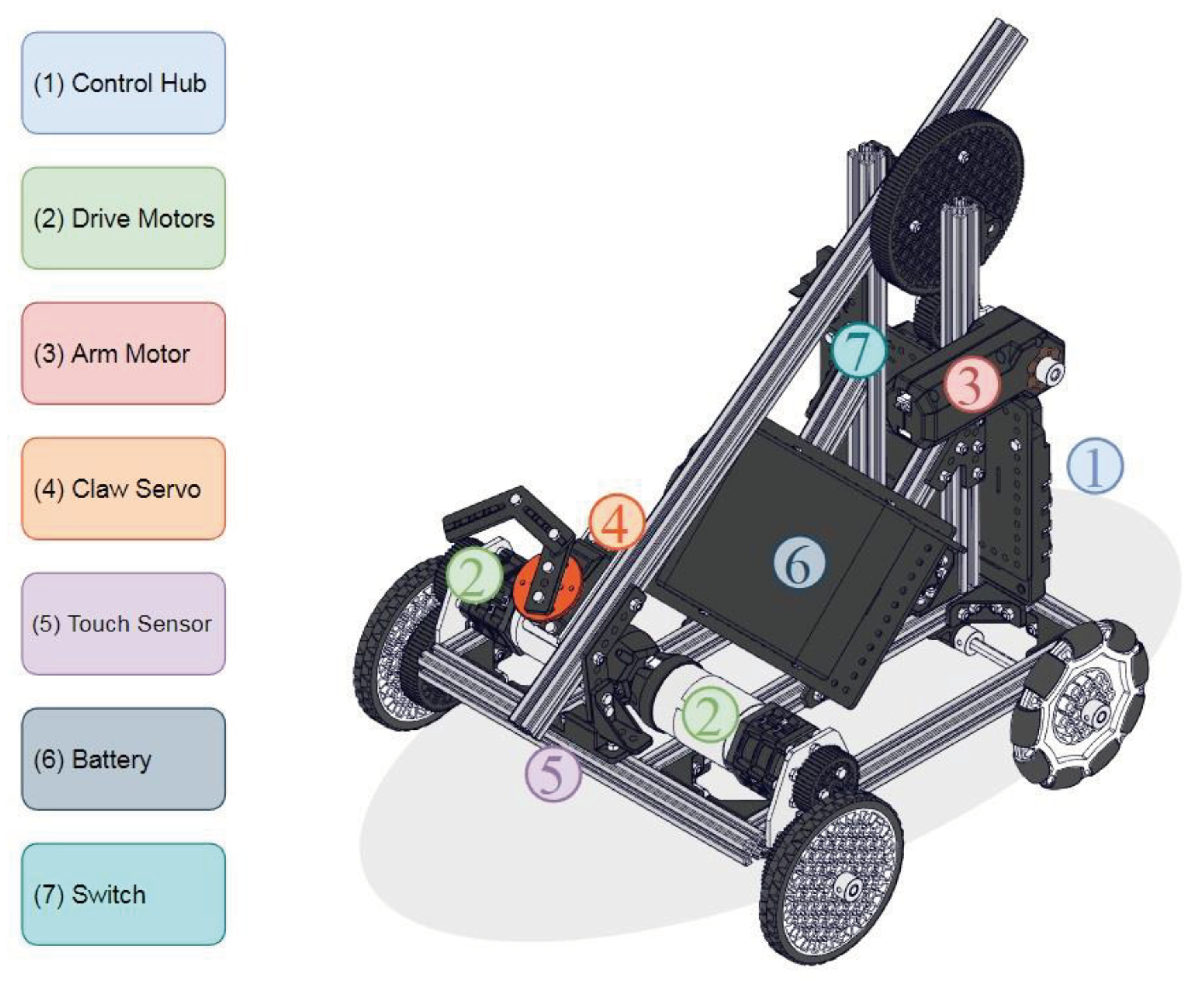
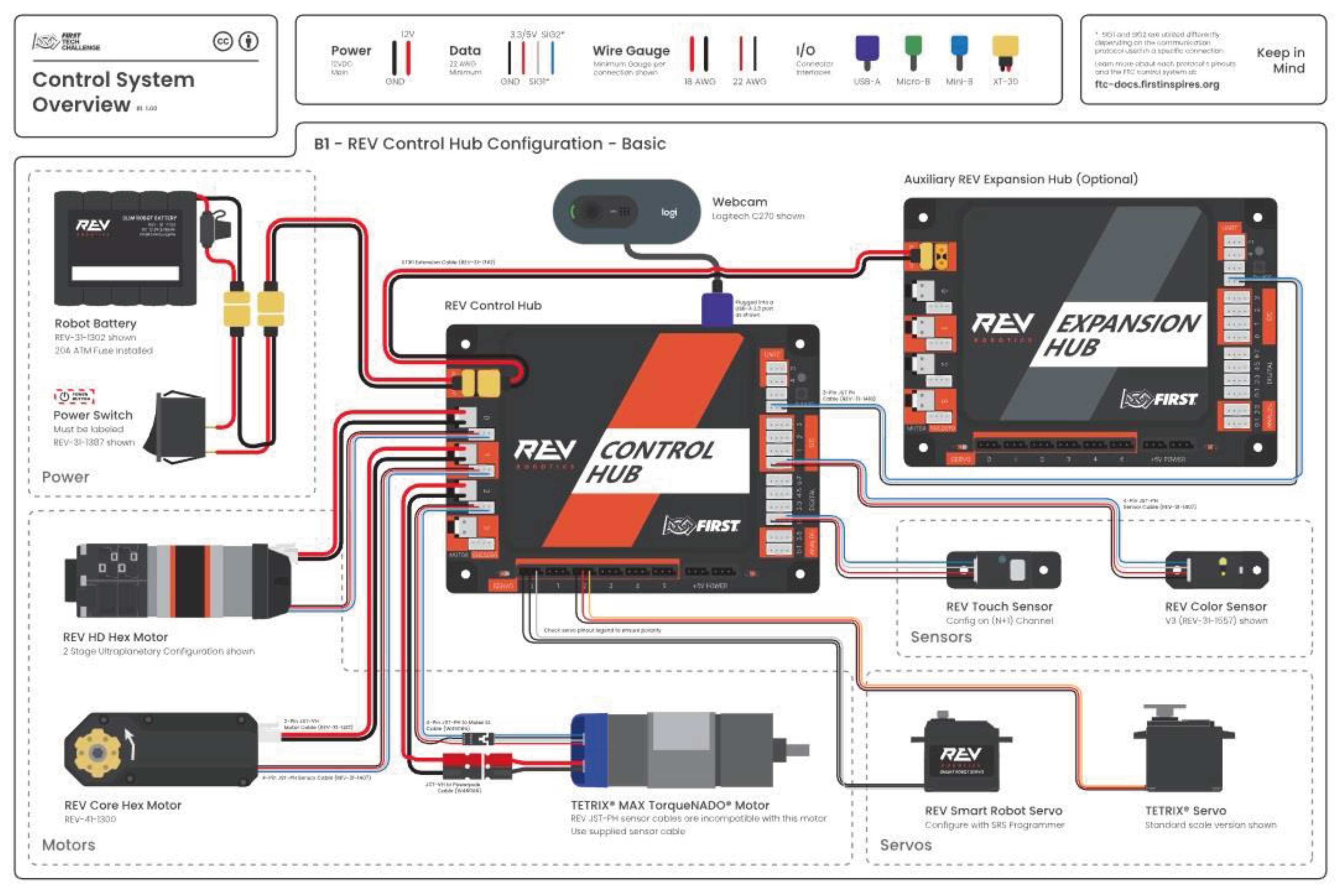
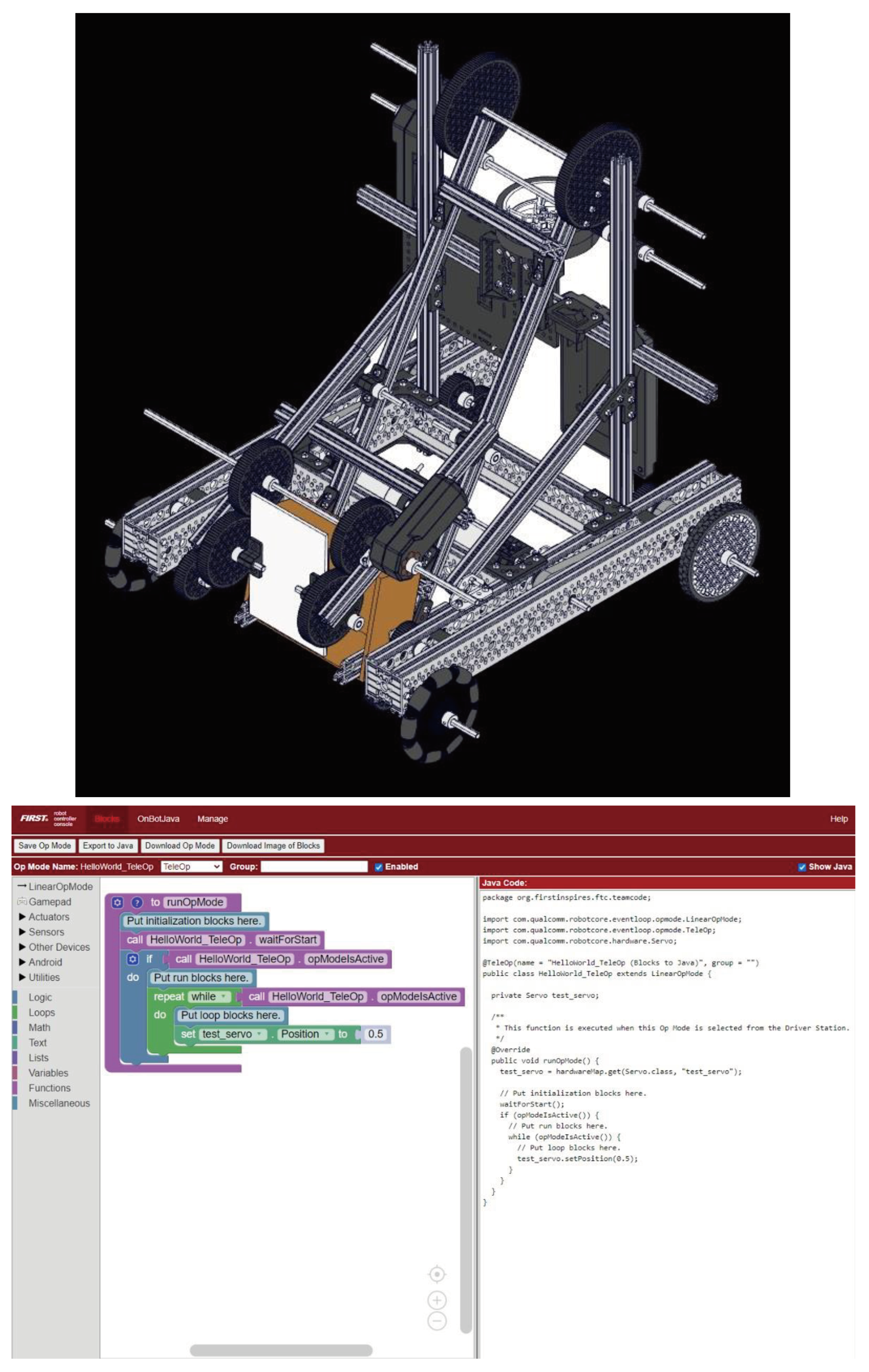
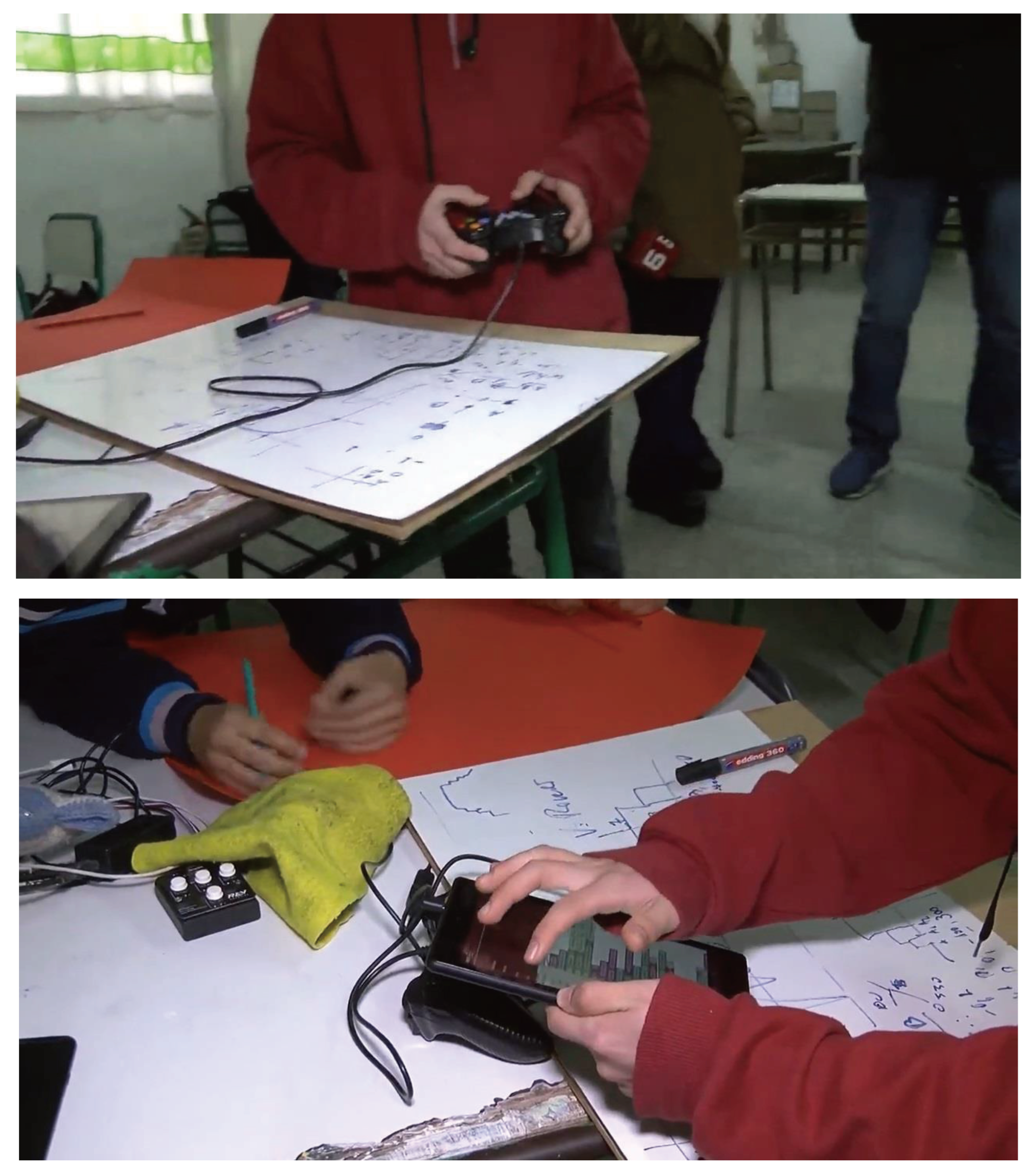
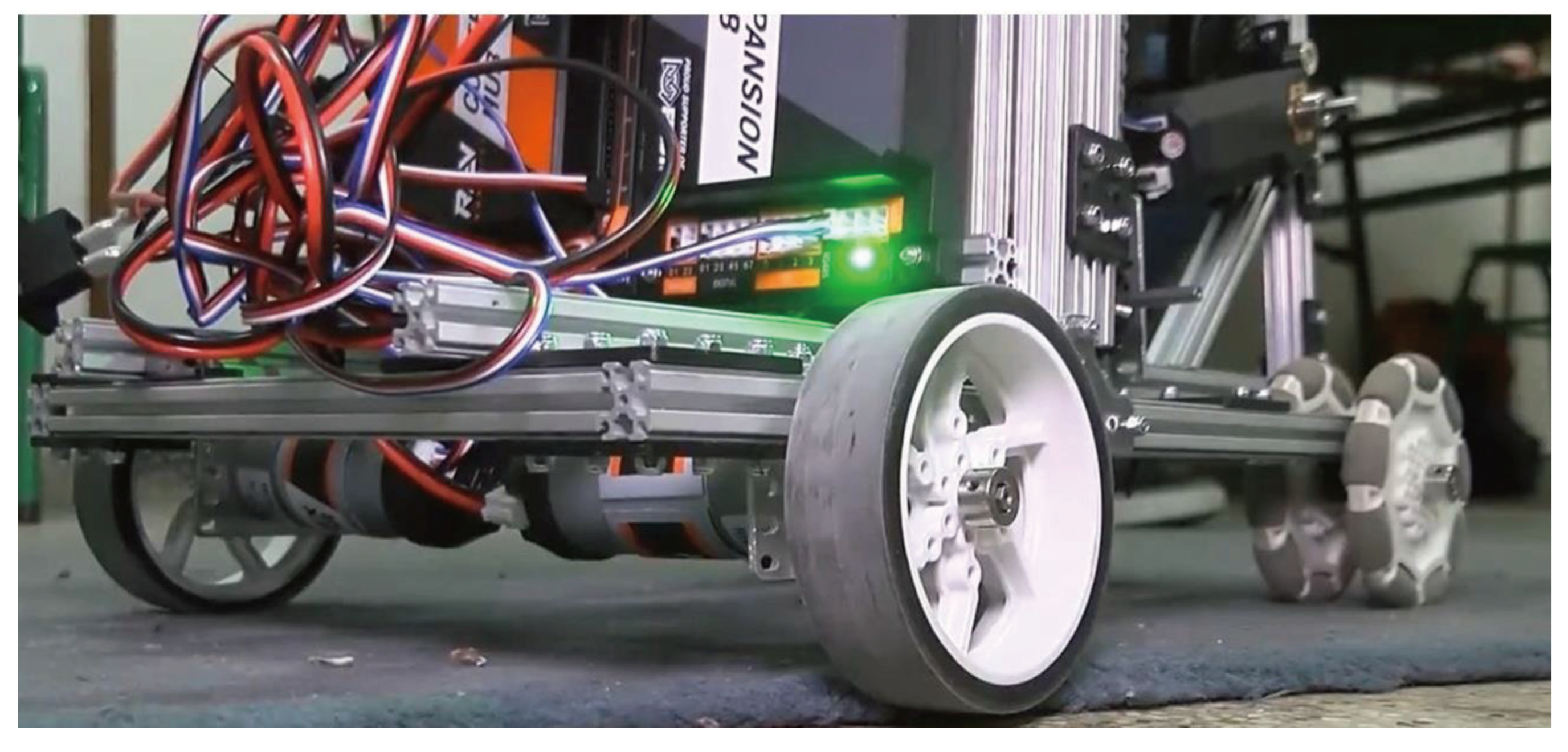
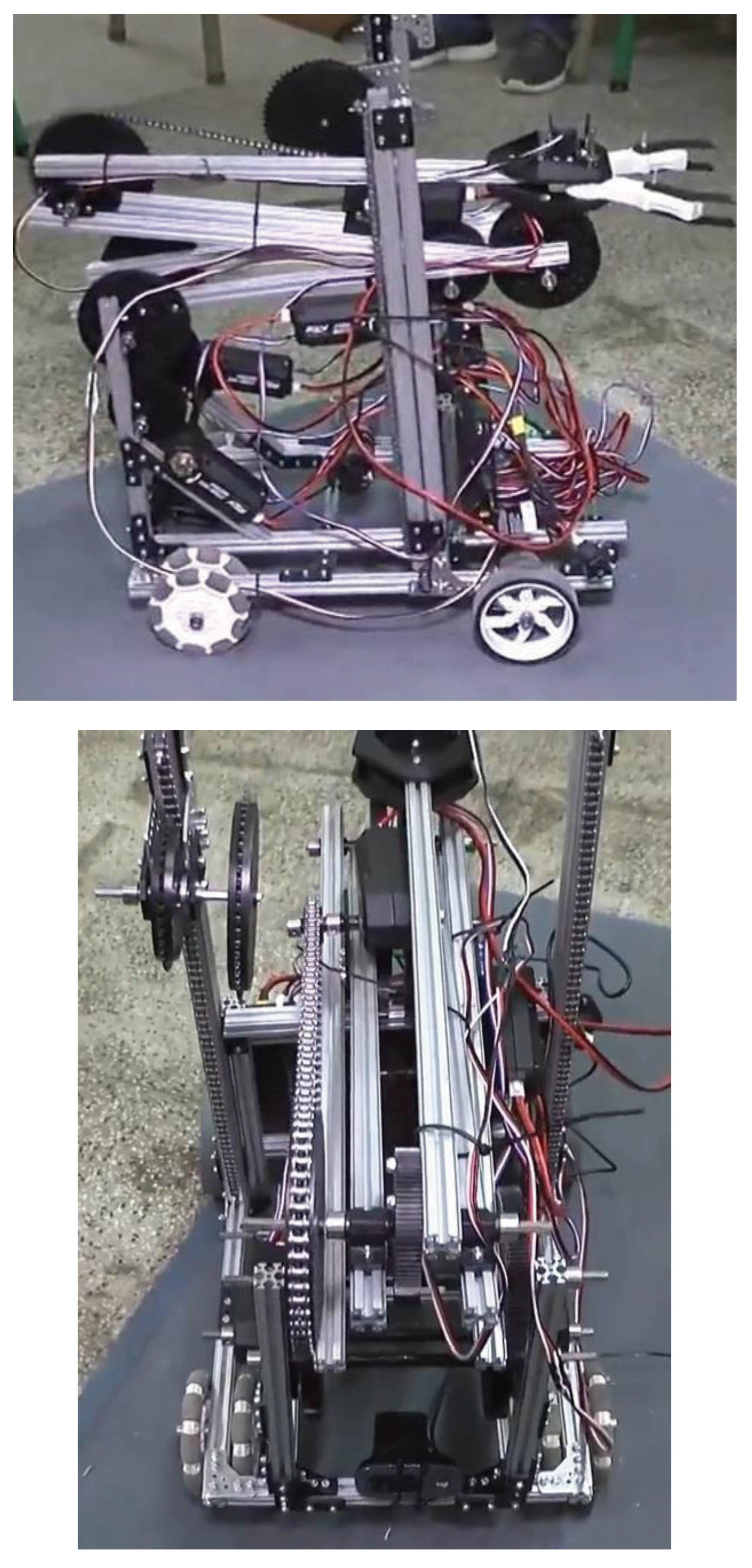
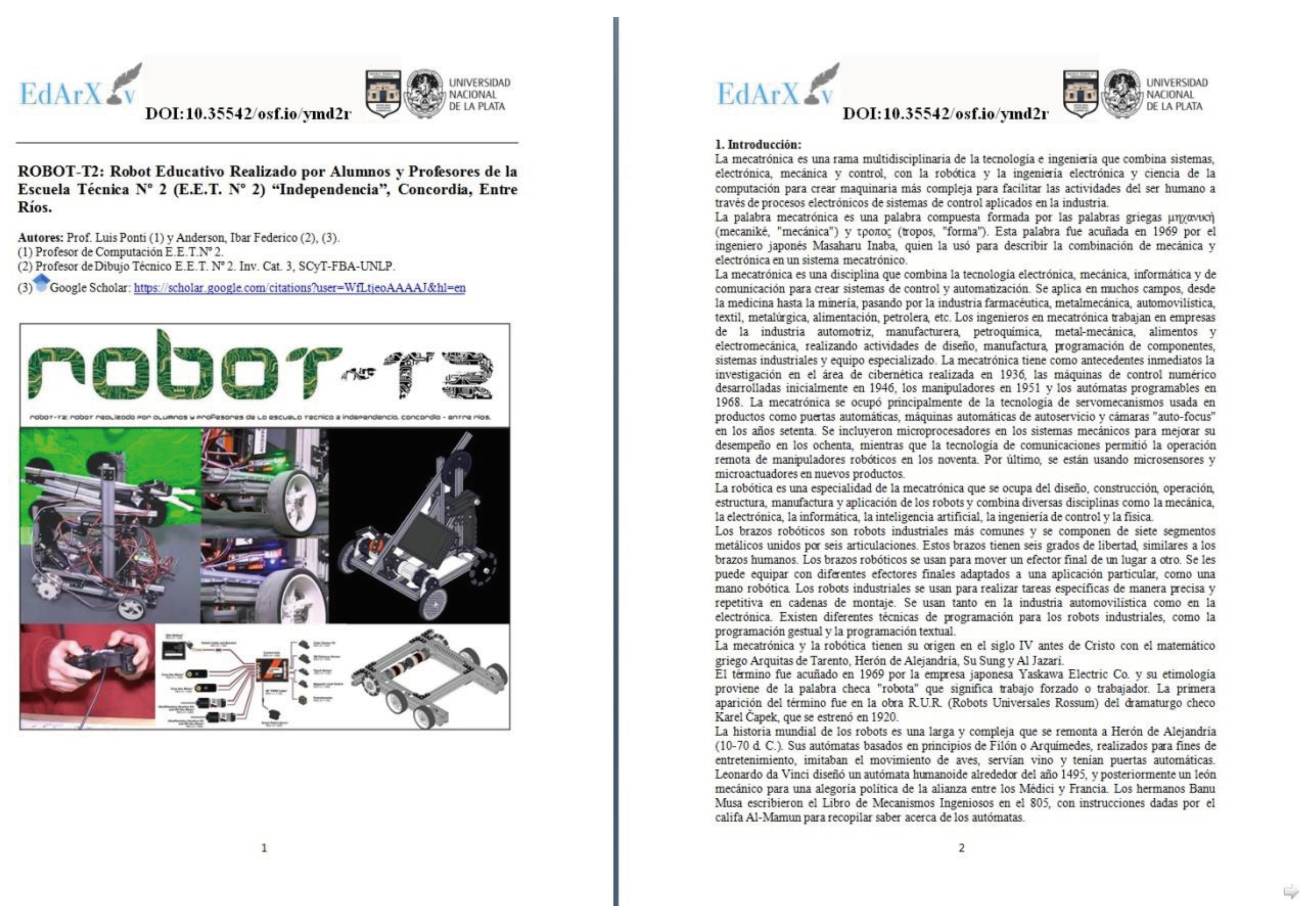
Case study No. 5: Relationships of all sciences with abductive thinking, creativity, design, art and the main relationships between Social Sciences (philosophy, logic, hermeneutic research methodology, etc.) with Exact and Natural Sciences (mathematics, physics, chemistry, biology, genetics), other sciences and disciplines such as engineering, medicine, etc
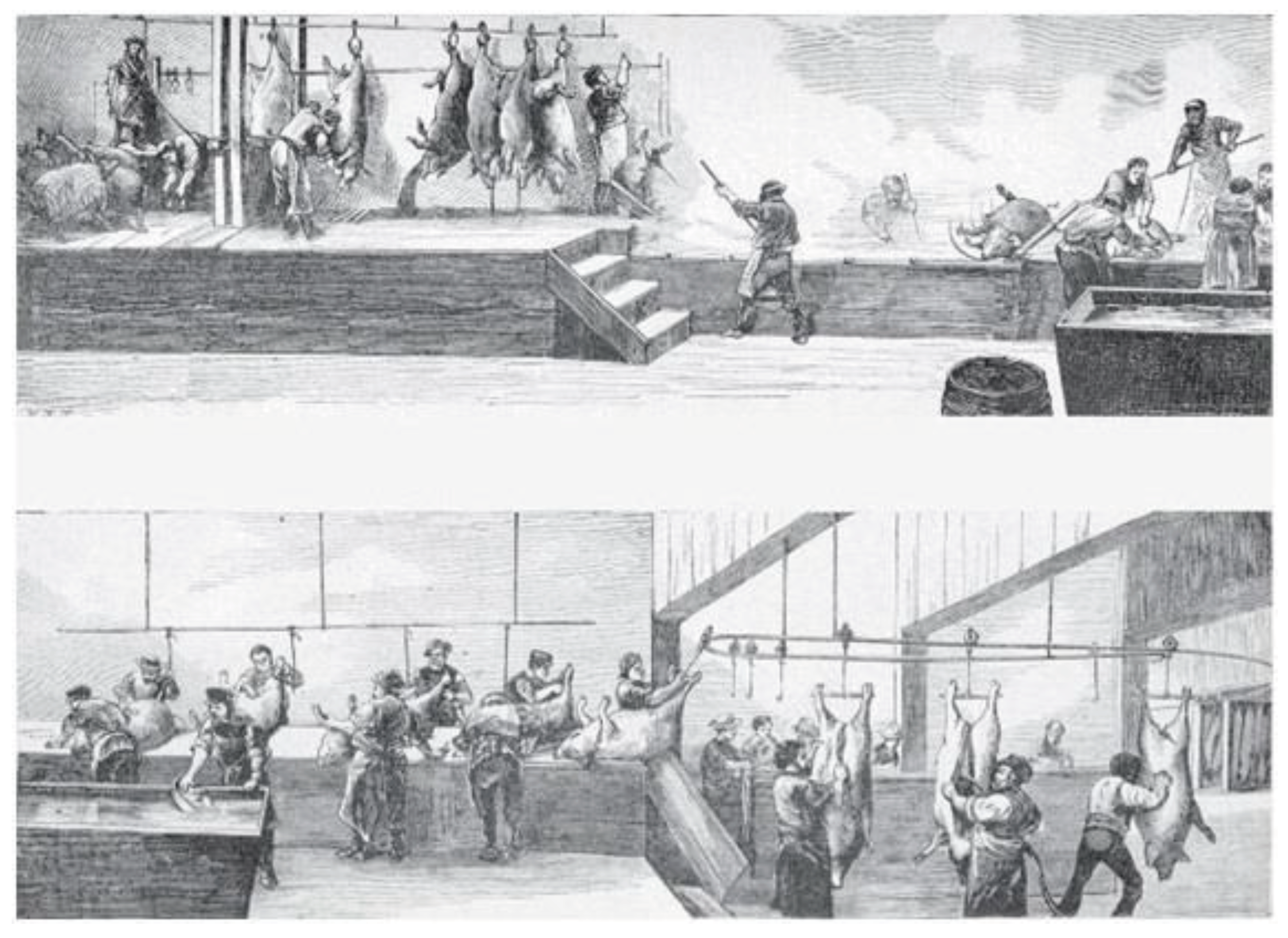
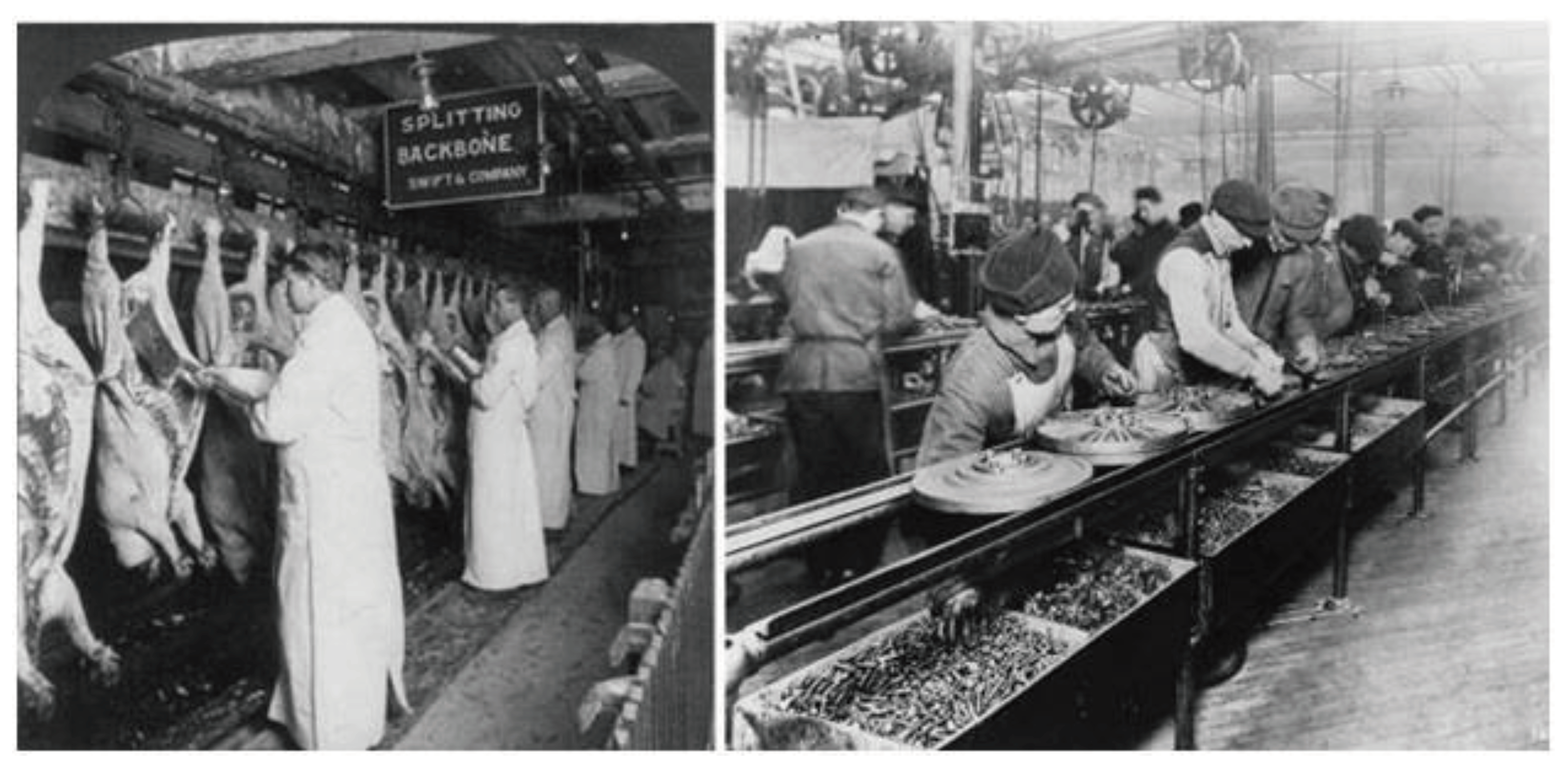
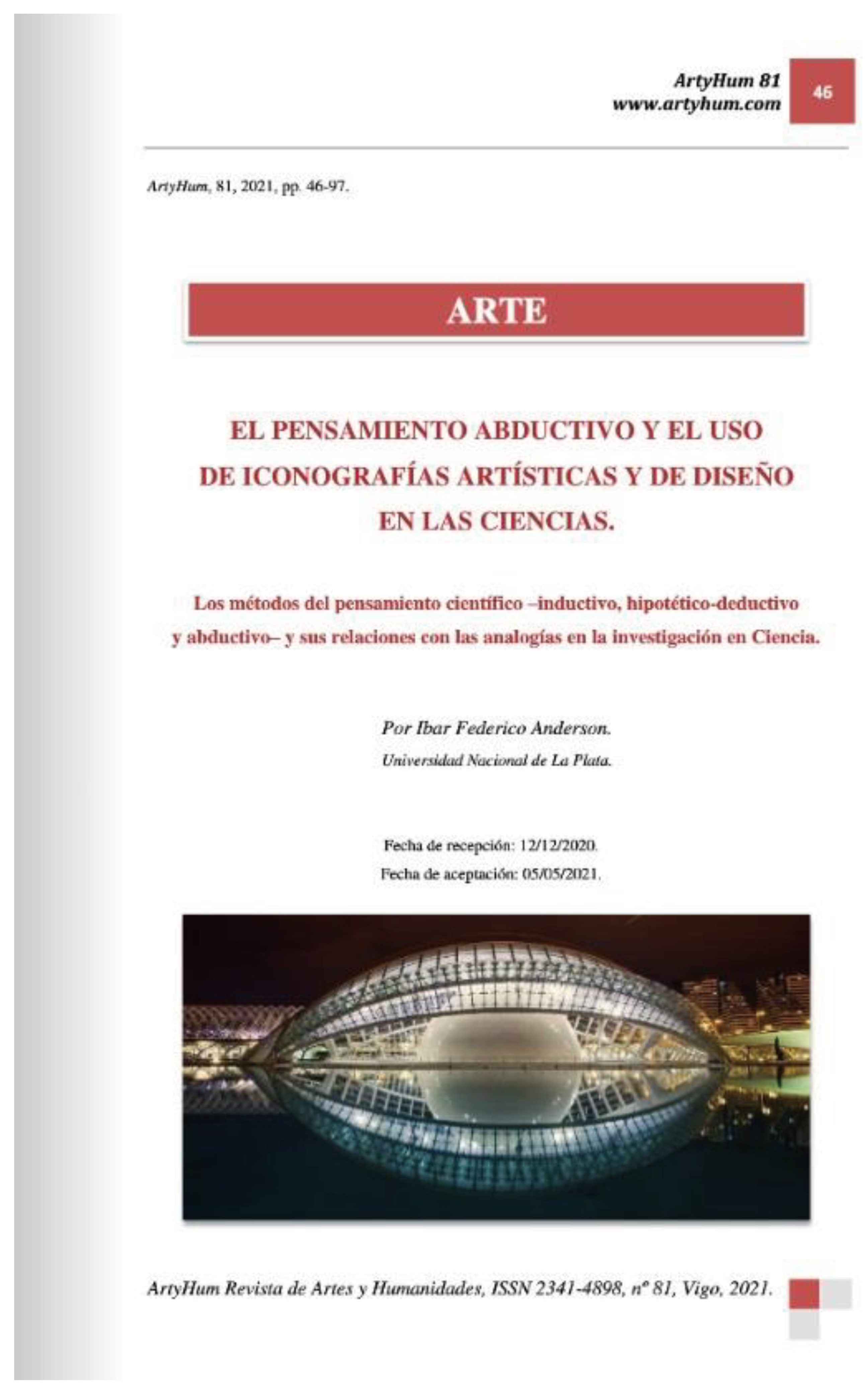
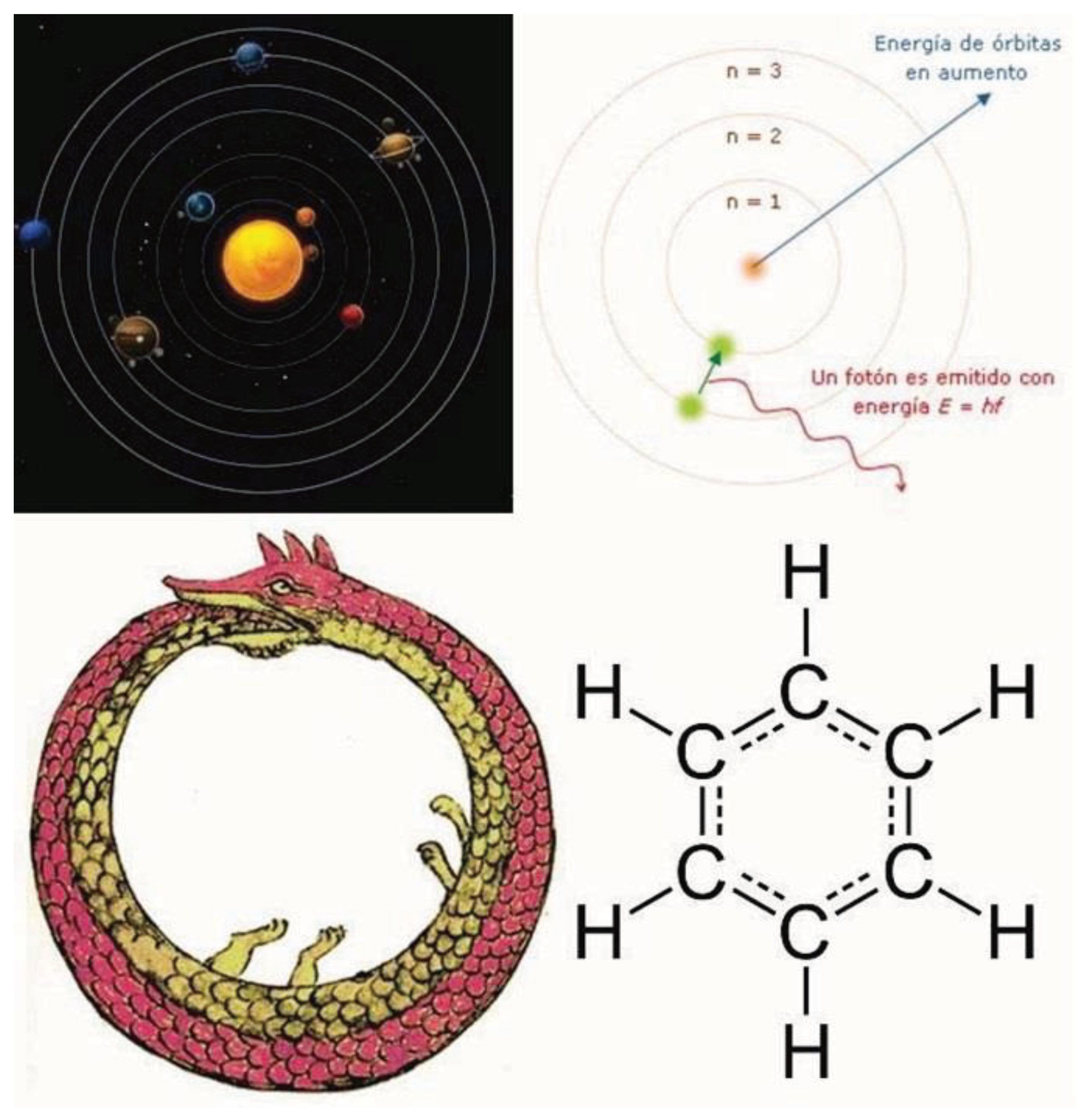
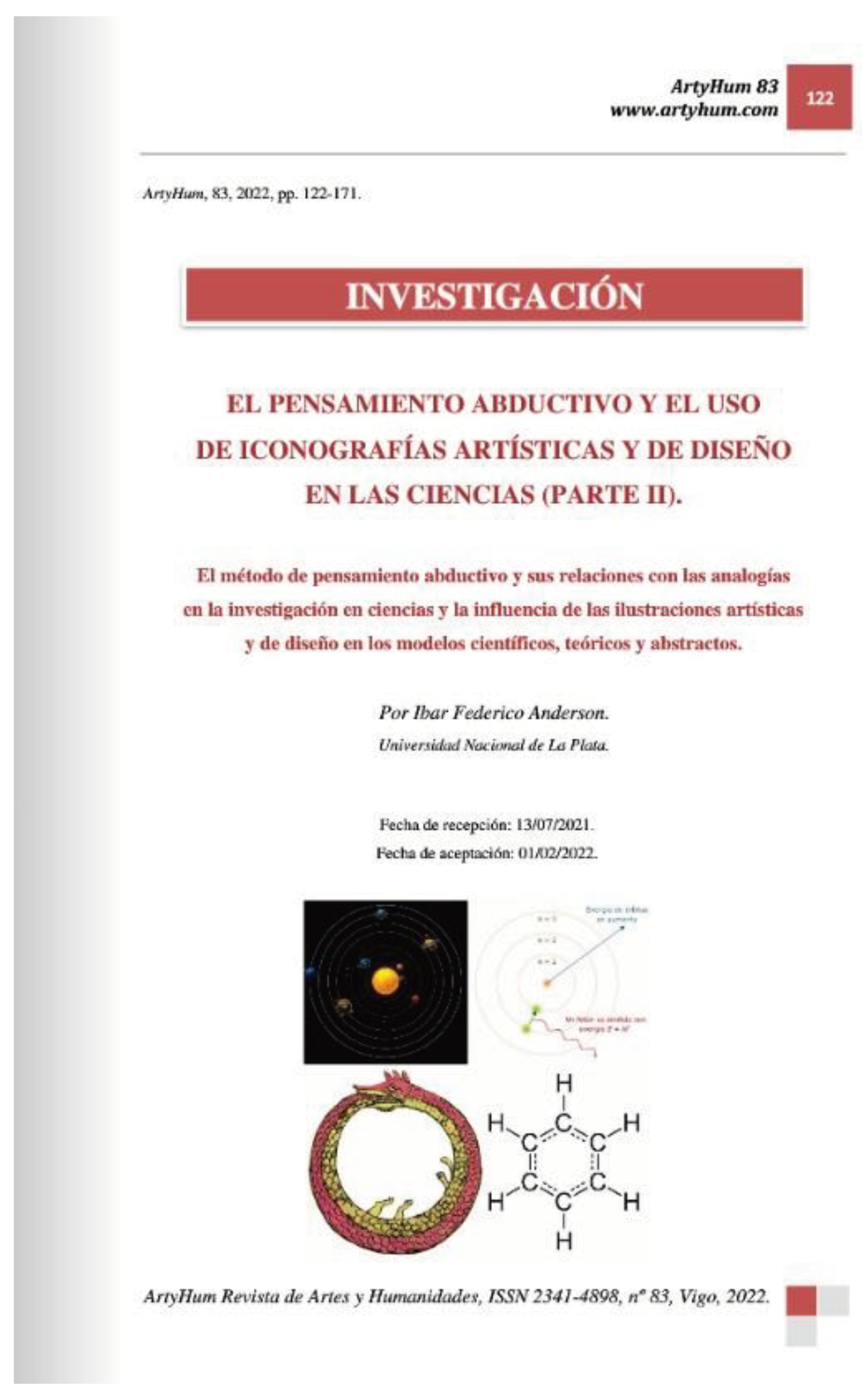
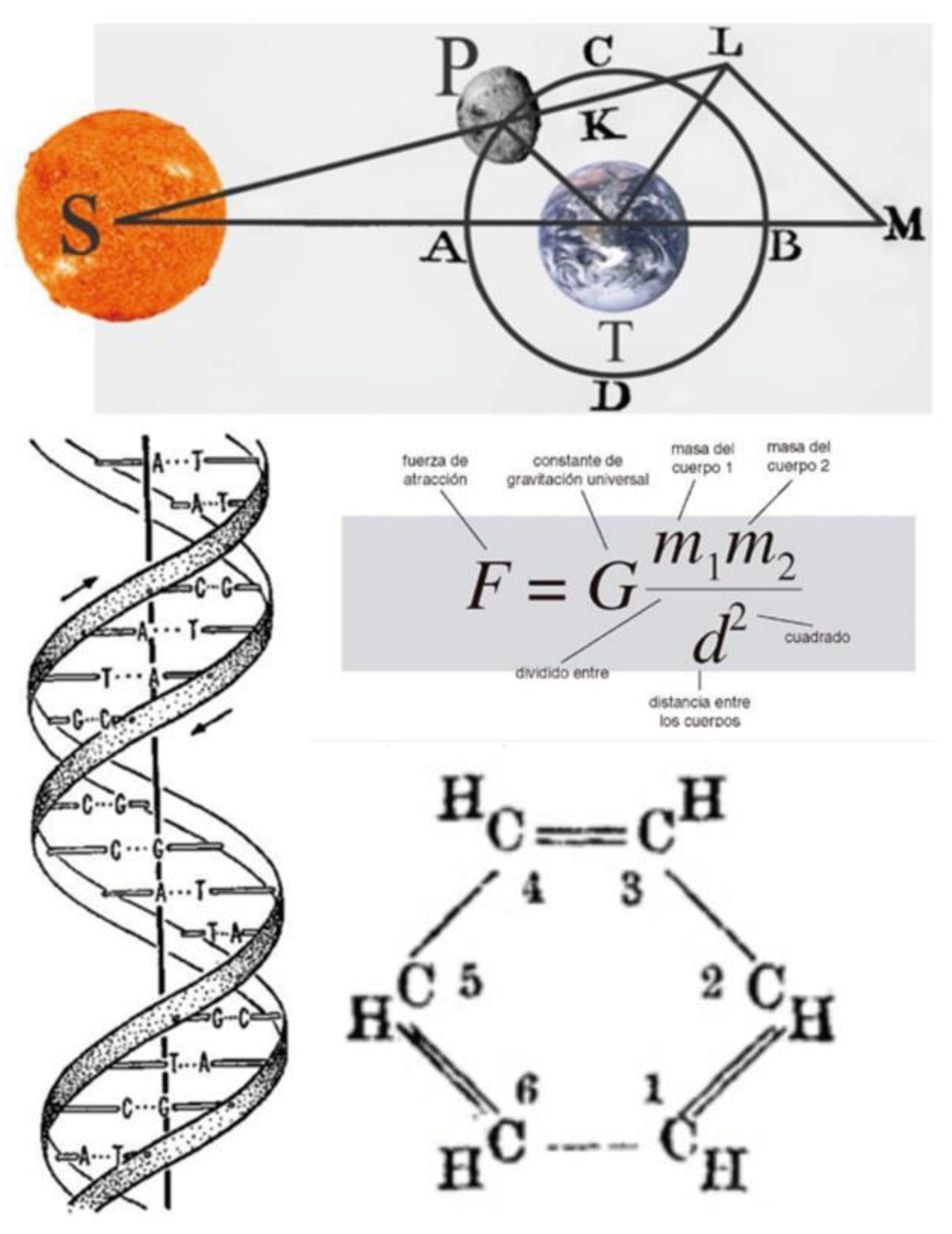
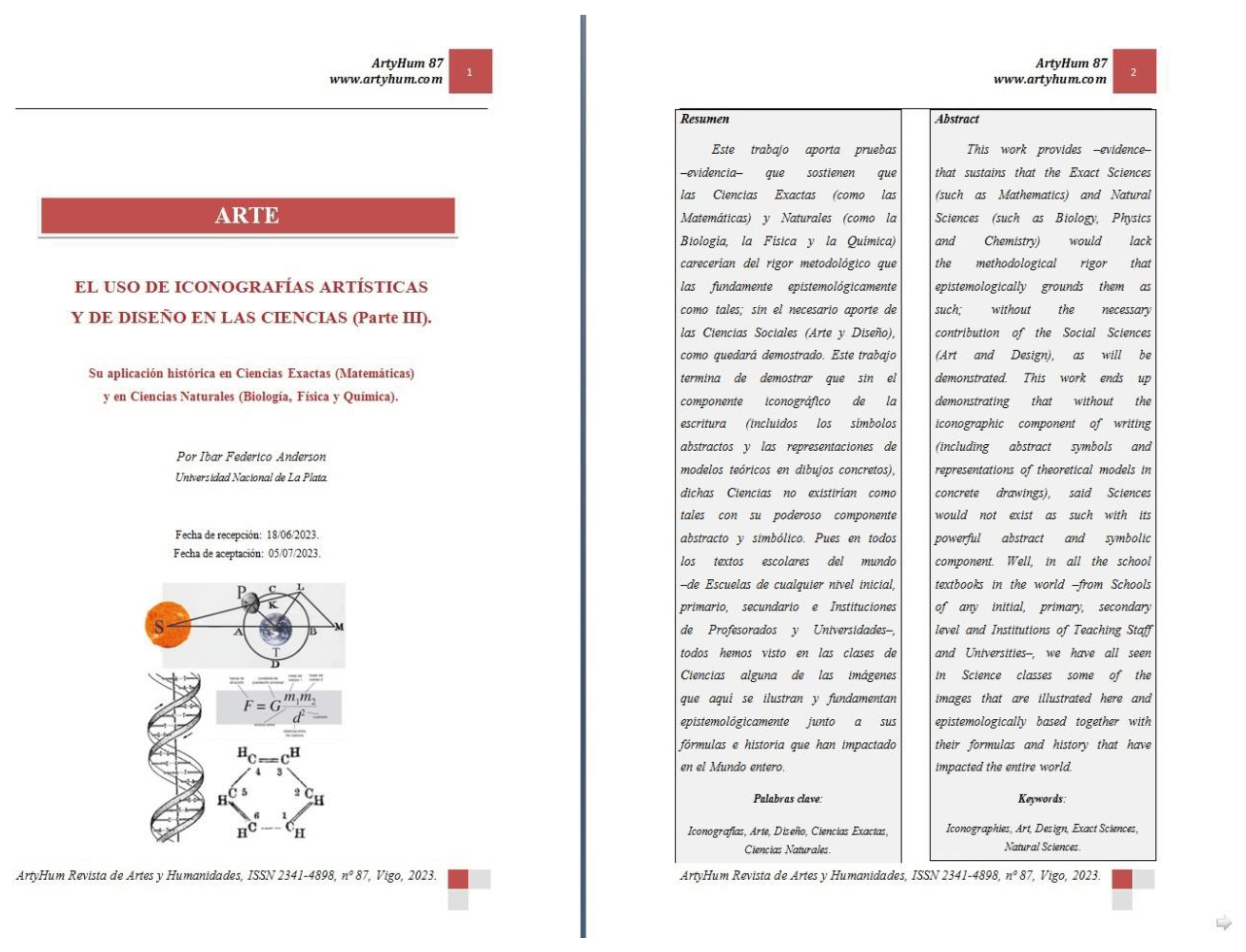
Conclusions
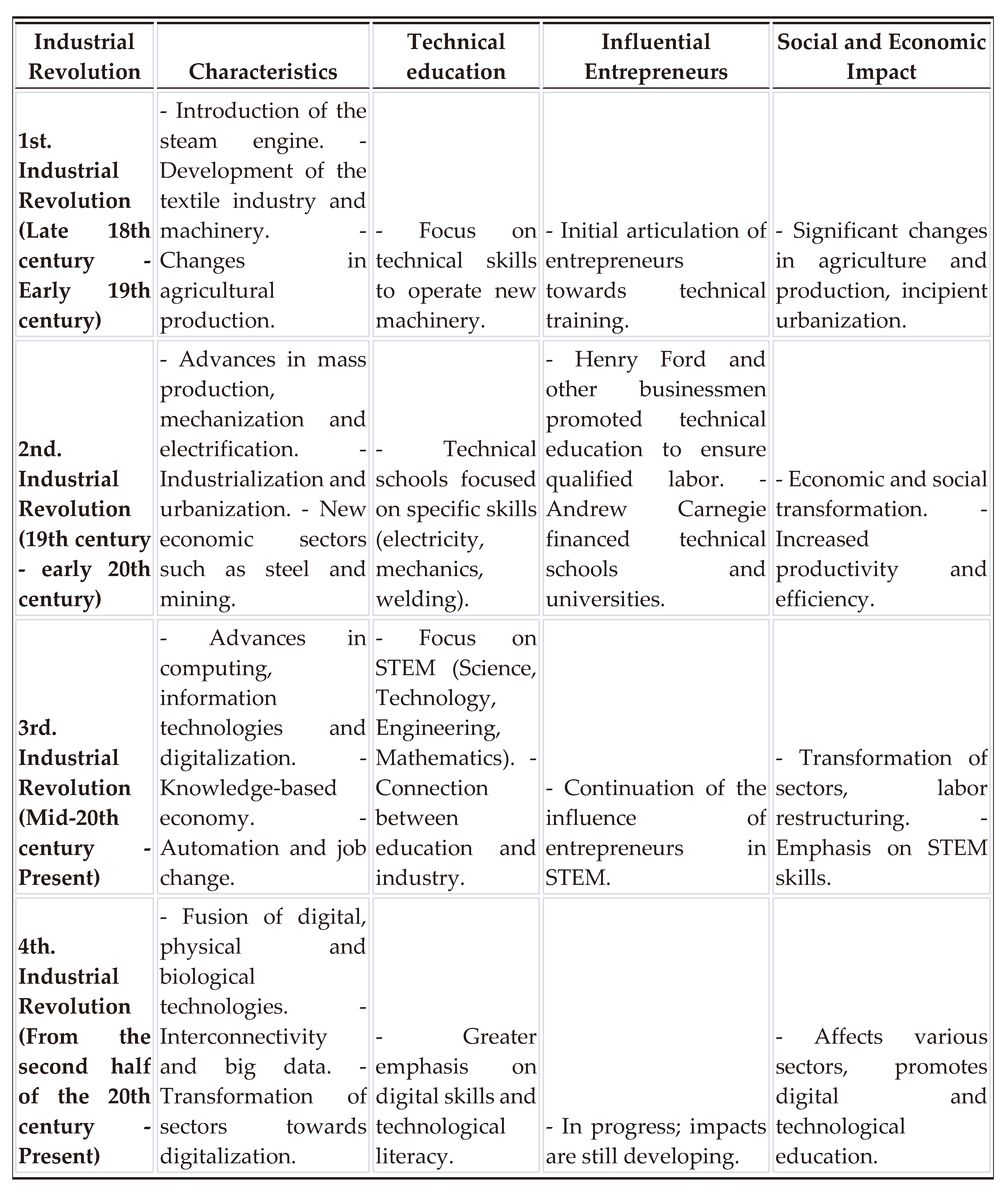
- 1.
-
Industry 2.0:
- -
- Industry 2.0, which developed during the second phase of the Industrial Revolution, introduced significant advances in areas such as electricity, oil, steel, the automotive industry and mass production.
- -
- Relationship with Education: This production model introduced transformations that affected the educational system, promoting specialization and specific technical training to meet the demands of the industry at that time.
- 2.
-
Industry 3.0:
- -
- Industry 3.0 is characterized by advances in computing, information technologies and digitalization, as well as the transition towards an economy based on knowledge and automation.
- -
- Relationship with Education: Industry 3.0 has promoted a focus on STEM (Science, Technology, Engineering, Mathematics) in education, with a greater connection between education and industry.
- 3.
-
Industry 4.0:
- -
- Industry 4.0 is characterized by the convergence of digital, physical and biological technologies, interconnectivity and the use of big data, as well as the transformation of various sectors with advanced technologies.
- -
- Relationship with Education: Industry 4.0 has promoted the integration of advanced technologies in education, promoting disruptive creativity, innovation and adaptation to the changing demands of the industry.
- Technology Integration: Industry 4.0 is characterized by digitalization, interconnectivity and the use of large amounts of data for decision making. In this context, technical schools have integrated advanced technologies into their educational programs, including the teaching of intelligent production systems, automation and data analysis.
- Focus on Disruptive Creativity: Industry 4.0 has promoted disruptive creativity in teaching industrial product models, encouraging innovation, advanced design and complex problem solving in a highly technological industrial environment.
- Adaptation to Industry Demands: Technical schools have had to adapt their curricula to reflect the changing demands of Industry 4.0, ensuring that students acquire skills relevant to advanced manufacturing, automation and data management in industrial environments.
- Transversal Teaching: The transversal teaching of industrial product models has incorporated interdisciplinary aspects, addressing the integration of technology, design, engineering and management in a modern industrial context.
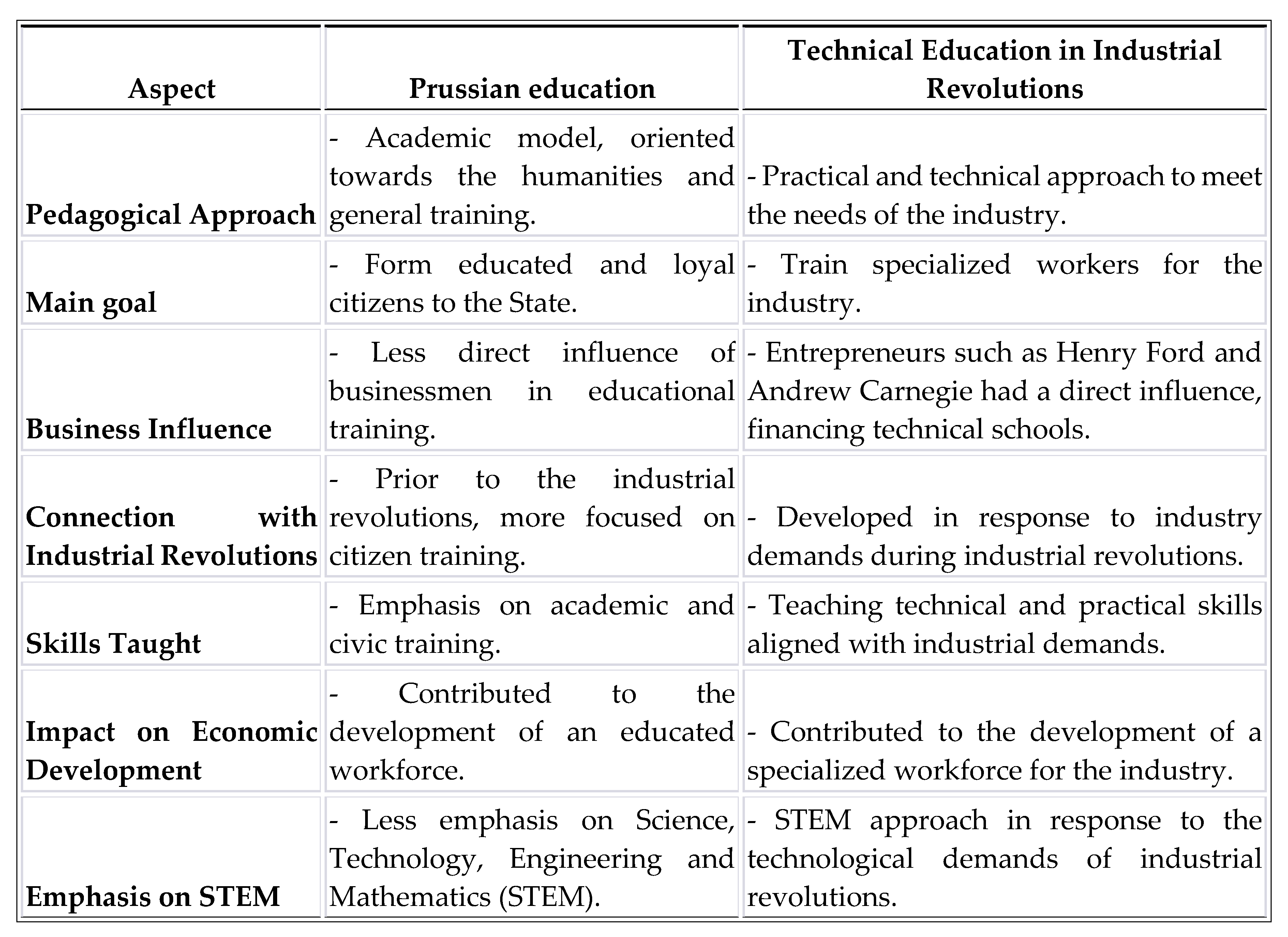
- 1.
-
Evolution of Technical Education:
- -
- Technical education has gone from being a secondary training option to a form of compulsory education in many Latin American countries.
- -
- There has been greater integration of technical education with general education, recognizing the importance of developing technical and technological skills in conjunction with a solid academic foundation.
- 2.
-
Challenges:
- -
- Access and Equity: One of the main challenges has been to guarantee equitable access to technical education for all students, regardless of their geographic location or socioeconomic condition.
- -
- Relevance and Update: Technical education has had to constantly adapt to technological advances and the changing needs of the industry, which has required a constant update of study plans and teaching methodologies.
- -
- Linkage with the World of Work: The effective connection between technical education and the world of work has been a challenge, since it is crucial that educational programs prepare students for the real demands of the labor market.
- 3.
-
Regulatory Framework:
- -
- The promulgation of specific laws and regulations, such as the National Education Law in Argentina (No. 26,206) and the Technical-Professional Education Law (No. 26,058), has sought to strengthen technical education and promote its articulation with the world of job.
| 1 | Anderson, I.F. (2021). Masks for covid-19 made by 3D printing at the Technical School No. 2 “Independencia”. Analysis of a case generated in TSE No. 2: face masks designed with CAD-STL software and printed in polylactic acid (PLA) with 3D printers, for protection from SARS-CoV-2 (Coronavirus). ArtyHum: Digital Magazine of Arts and Humanities, No. 82, 43-84. Handle: http://sedici.unlp.edu.ar/handle/10915/141734
|
| 2 | |
| 3 | |
| 4 | Anderson, I.F. (2021). Analysis of a case generated at Technical School No. 2: face masks designed in CAD-STL software and printed in polylactic acid (PLA) with 3D printers, for protection from SARS-CoV-2 or Covid-19 (Coronavirus). Academic Reflection in Design and Communication, year XXII, vol. 48, 77-87. Handle:http://sedici.unlp.edu.ar/handle/10915/142965 http://sedici.unlp.edu.ar/bitstream/handle/10915/142965/Documento_completo.pdf-PDFA.pdf?sequence=1&isAllowed=y |
| 5 | |
| 6 | Official website of the INNOVAR National Contest, dependent on the MINCYT (Ministry of Science and Technology of the Nation):https://www.innovar.mincyt.gob.ar/
|
| 7 | Official website of the National Agency for the Promotion of Research, Technological Development and Innovation (R&D&i Agency):https://www.argentina.gob.ar/ciencia/agencia
|
| 8 | Official news channel –www.argentina.gob.ar- where the information on the 16th was communicated. Awards ceremony edition of the INNOVAR 2021 National Competition, dependent on the MINCYT (Ministry of Science and Technology of the Nation):https://www.argentina.gob.ar/noticias/se-distinguieron-los-proyectos-ganadores-de-la-decimosexta-edicion-del-concurso-innovar
|
| 9 | Anderson, I.F. (2021). “Project: ID 2021-21751 Turbo: air extractor/blower for environments contaminated by COVID-19", in the National INNOVAR Competition, 16th Edition of the MINCYT (Ministry of Science, Technology and Productive Innovation of the Nation) and the Information Agency +D+i (National Agency for the Promotion of Research, Technological Development and Innovation. Buenos Aires. MINCYT + ANPCYT. Online:https://www.innovar.mincyt.gob.ar/docs/INNOVAR_ganadores_2021.pdf
|
| 10 | Anderson, I. F. (2023). Energy efficient centrifugal air extractor for environments contaminated with SARS-CoV-2 (Coronavirus). Innovation and Technological and Social Development, (4), 20-67. DOI:https://doi.org/10.24215/26838559e032. Handle:http://sedici.unlp.edu.ar/handle/10915/150657
|
| 11 | |
| 12 | Anderson, I. F. (2022). 1st National INNOVAR 2021 Award from the National R&D&I Agency – MINCYT Nation: centrifugal air extractor, for environments contaminated with SARS-CoV-2, with high energy efficiency. 10th Research Conference on Artistic and Project Disciplines (JIDAP) of the FBA-UNLP. Handle:http://sedici.unlp.edu.ar/handle/10915/148463
|
| 13 | |
| 14 | Anderson, I. F. (2023). Centrifugal air extractor that reduces the carbon footprint. Notebooks, 193, 31-46. Online:https://fido.palermo.edu/servicios_dyc/publicacionesdc/cuadernos/detalle_articulo.php?id_libro=1033&id_articulo=19856Handle:http://sedici.unlp.edu.ar/handle/10915/154308
|
| 15 | |
| 16 | Anderson, I. F. (2022). Industrial and electromechanical design of a highly energy efficient centrifugal air extractor for environments with Covid-19. TECSUP (R&I) Applied research and innovation, 16, 44-57. Handle:http://sedici.unlp.edu.ar/handle/10915/147583
|
| 17 | |
| 18 | Anderson, I. F. (2023). An Innovative Method to Increase Energy Efficiency of PMSM-Type Synchronous Motors. IUP Journal of Electrical and Electronics Engineering, 16, (1), 7-35. Handle:http://sedici.unlp.edu.ar/handle/10915/150750
|
| 19 | |
| 20 | Anderson, I. F. (2022). Energy Efficient Centrifugal Air Extractor for Environments Contaminated With Sars-Cov-2 (Coronavirus). How to Build a Motor That Saves Electricity. Preprints, 1-31. DOI:https://doi.org/10.31219/osf.io/gepbc. Handle:http://sedici.unlp.edu.ar/handle/10915/145958
|
| 21 | |
| 22 | Anderson, I. F. (2022). Hertzian motor: An innovative method to obtain an energy efficiency of 90%, in savings in single-phase active energy (kwh), if the “Fan Law” is applied to PMSM-type synchronous motors without the need to apply the use of Variable Frequency Drives (VFD). OSFpreprints, 1-53. DOI:https://osf.io/e7cv8. Handle:http://sedici.unlp.edu.ar/handle/10915/147431
|
| 23 | |
| 24 | Anderson, I. F. (2023). Review of the Literature Referring to a Method to Achieve Active Electrical Energy Savings -Single-Phase 220 (VAC) and 50 (Hz) -in Synchronous Ventilation Motors, Greater than that Obtained with the "Fan Law". Journal of Sensor Networks and Data Communications. DOI:https://doi.org/10.33140/JSNDC.03.01.11Handle:https://sedici.unlp.edu.ar/handle/10915/161060 https://sedici.unlp.edu.ar/bitstream/handle/10915/161060/Documento_completo.pdf-PDFA.pdf?sequence=1&isAllowed=y |
| 25 | Official website of the INNOVAR National Contest, dependent on the MINCYT (Ministry of Science and Technology of the Nation):https://www.innovar.mincyt.gob.ar/
|
| 26 | |
| 27 | Anderson, I. F. (2023). ROBOT-T2: Educational Robot Made by Students and Teachers of the Technical School No. 2 (EET No. 2) “Independencia”, Concordia, Entre Ríos. EdArXiv Preprints, 1-50. DOI:https://edarxiv.org/ymd2r. Handle:http://sedici.unlp.edu.ar/handle/10915/152697
|
| 28 | |
| 29 | Official website of the INNOVAR National Contest, dependent on the MINCYT (Ministry of Science and Technology of the Nation):https://www.innovar.mincyt.gob.ar/
|
| 30 | Official website of the National Agency for the Promotion of Research, Technological Development and Innovation (R&D&i Agency):https://www.argentina.gob.ar/ciencia/agencia
|
| 31 | Official website of the National Institute of Industrial Technology (INTI):https://www.argentina.gob.ar/inti
|
| 32 | Official website of the National Institute of Agricultural Technology (INTA):https://www.argentina.gob.ar/inta
|
| 33 | Official website of the National Institute of Technological Education (INET):https://www.inet.edu.ar/
|
| 34 | Source INET (National Institute of Technological Education)https://www.inet.edu.ar/index.php/el-ministerio-de-ciencia-junto-al-inet-inti-e-inta-promueven-la-participacion-de-escuelas-tecnicas-y- agrotechniques-in-innovate/ |
| 35 | Official information from the website –www.argentina.bob.ar-:https://www.argentina.gob.ar/noticias/se-lanza-una-nueva-edicion-de-innovar-que-premiara-proyectos-de-impacto-social-y-comercial
|
| 36 | Anderson, I. F. (2023). Self-construction EcoBlock, for social housing. EdArXiv Preprints, 1-46. DOI:https://edarxiv.org/e2nbd/. Handle:http://sedici.unlp.edu.ar/handle/10915/153895 http://sedici.unlp.edu.ar/bitstream/handle/10915/153895/Documento_completo.pdf-PDFA.pdf?sequence=1&isAllowed=y |
| 37 | Anderson, I. F. (2006). “How to do Industrial Design in cities, towns and deindustrialized or non-industrialized regions of Argentina?” Design Proceedings, (2), 34-38. Online:https://dspace.palermo.edu/ojs/index.php/actas/article/view/3361/3447
|
| 38 | Anderson, I. F. (2009). “Hybrid Technologies and Ecodesign.” Design Proceedings, (7), 43-45. Online:https://fido.palermo.edu/servicios_dyc/publicacionesdc/actas_de_diseno/detalle_articulo.php?id_libro=16&id_articulo=5863Handle:http://sedici.unlp.edu.ar/handle/10915/142558 http://sedici.unlp.edu.ar/bitstream/handle/10915/142558/Documento_completo.pdf-PDFA.pdf?sequence=1&isAllowed=y |
| 39 | Anderson, I.F. (2021). “Abductive thinking and the use of artistic and design iconography in the sciences.”ArtyHum: Digital Magazine of Arts and Humanities, 81, pp. 46-97. Handle:http://sedici.unlp.edu.ar/handle/10915/141081
|
| 40 | |
| 41 | Anderson, I.F. (2021). Abductive thinking and the use of artistic and design iconography in the sciences (Part 2). ArtyHum: Digital Journal of Arts and Humanities, 83, 122-171. Handle: http://sedici.unlp.edu.ar/handle/10915/141170
|
| 42 | |
| 43 | Anderson, I. F. (2023). “The use of artistic and design iconography in Sciences (Part III). Its historical application in Exact Sciences (Mathematics) and in Natural Sciences (Biology, Physics and Chemistry)”. ArtyHum: Digital Magazine of Arts and Humanities,No. 87, pp. Handle: |
References
- Anderson, I. F. (2006). “¿Cómo hacer Diseño Industrial en ciudades, localidades y regiones desindustrializadas o no-industrializadas de la Argentina?”. Actas de Diseño, (2), 34-38. En línea: https://dspace.palermo.edu/ojs/index.php/actas/article/view/3361/3447.
- Anderson, I. F. (2009). “Tecnologías Híbridas y Ecodiseño”. Actas de Diseño, (7), 43-45. En línea: https://fido.palermo.edu/servicios_dyc/publicacionesdc/actas_de_diseno/detalle_articulo.php?id_libro=16&id_articulo=5863.
- Anderson, I. F (2019). “Mejoras de eficiencia energética (EE) en los motores monofásicos sincrónicos de 220 (VAC)/50 (Hz), tipo PMSM”. Revista UIS Ingenierías, vol. 18 (4), pp. 57-70. En línea: https://revistas.uis.edu.co/index.php/revistauisingenierias/article/view/9300/9869. [CrossRef]
- 4. Anderson, I. F. (2019). “Eco-turbina. Turbo ventilador eléctrico 220 (VAC)–50 (Hz), de bajo consumo: eficiente energéticamente”. Innovación y Desarrollo Tecnológico y Social, vol. 1 (1), pp. 1-28. En línea: https://revistas.unlp.edu.ar/IDTS/article/view/6270/7812. [CrossRef]
- Anderson, I. F. (2020). Alicia a Través de las Puertas, los Espejos y las Ventanas. ArtyHum: Revista Digital de Artes y Humanidades, (69), 8-41. Handle: http://sedici.unlp.edu.ar/handle/10915/141523 http://sedici.unlp.edu.ar/bitstream/handle/10915/141523/Documento_completo.pdf-PDFA.pdf?sequence=1&isAllowed=y En línea: https://www.artyhum.com/revista/69/#p=8.
- Anderson, I. F. (2020). Breve historia occidental del diseño de muebles (Parte 1). ArtyHum: Revista Digital de Artes y Humanidades, (71), 61-114. Handle: http://sedici.unlp.edu.ar/handle/10915/141300 http://sedici.unlp.edu.ar/bitstream/handle/10915/141300/Documento_completo.pdf-PDFA.pdf?sequence=1&isAllowed=y En línea: https://www.artyhum.com/revista/71/#p=58.
- Anderson, I. F. (2020). La civilizada arquitectura europea y sus vínculos con el hábitat doméstico latinoamericano. ArtyHum: Revista Digital de Artes y Humanidades, (73), 8-63. Handle: http://sedici.unlp.edu.ar/handle/10915/141413 http://sedici.unlp.edu.ar/bitstream/handle/10915/141413/Documento_completo.pdf-PDFA.pdf?sequence=1&isAllowed=y En línea: https://www.artyhum.com/revista/73/ArtyHum%2073%20%20.html#p=8.
- Anderson, I. F. (2020). Breve historia occidental del diseño de muebles (parte 2). ArtyHum: Revista Digital de Artes y Humanidades, (74), 61-114. Handle: http://sedici.unlp.edu.ar/handle/10915/141346 http://sedici.unlp.edu.ar/bitstream/handle/10915/141346/Documento_completo.pdf-PDFA.pdf?sequence=1&isAllowed=y En línea: https://www.artyhum.com/revista/74/#p=62.
- Anderson, I. F. (2020). Teorema de lo bello (Parte IV). ArtyHum: Revista Digital de Artes y Humanidades, (75), 28-62. Handle: http://sedici.unlp.edu.ar/handle/10915/141037 http://sedici.unlp.edu.ar/bitstream/handle/10915/141037/Documento_completo.pdf-PDFA.pdf?sequence=1&isAllowed=y En línea: https://www.artyhum.com/revista/75/#p=29.
- Anderson, I. F. (2020). La estética de las máquinas de la Belle Époque europea y sus influencias culturales en Latinoamérica. ArtyHum: Revista Digital de Artes y Humanidades, (77), 65-106. Handle: http://sedici.unlp.edu.ar/handle/10915/141467 http://sedici.unlp.edu.ar/bitstream/handle/10915/141467/Documento_completo.pdf-PDFA.pdf?sequence=1&isAllowed=y En línea: https://www.artyhum.com/revista/77/#p=66.
- Anderson, I. F., Argüero, Á. J. A., Dorochesi Fernandois, M., Agrelo, P. J., Alfano, A. C., Bischoff, L. C. & Del Giorgio Solfa, F. (Dir.) (2020). Gestión integrada de diseño e innovación. Handle: http://sedici.unlp.edu.ar/handle/10915/125244.
- http://sedici.unlp.edu.ar/bitstream/handle/10915/125244/Documento_completo.pdf?sequence=1&isAllowed=y.
- Anderson, I. F. (2021). Máscaras para covid-19 hechas por impresión 3d en la Escuela Técnica Nº 2 “Independencia”. ArtyHum: Revista Digital de Artes y Humanidades, (82), 43-84. Handle: http://sedici.unlp.edu.ar/handle/10915/141734 http://sedici.unlp.edu.ar/bitstream/handle/10915/141734/Documento_completo.pdf-PDFA.pdf?sequence=1&isAllowed=y En línea: https://www.artyhum.com/revista/82/#p=44.
- Anderson, I. F. (2021). Análisis de un caso generado en la Escuela Técnica N° 2: máscaras faciales diseñadas en software CAD-STL e impresas en poliácido láctico (PLA) con impresoras 3D, para protección del SARS-CoV-2 o Covid-19 (Coronavirus). Reflexión Académica en Diseño y Comunicación, año XXII, vol. 48, 77-87. Handle: http://sedici.unlp.edu.ar/handle/10915/142965 http://sedici.unlp.edu.ar/bitstream/handle/10915/142965/Documento_completo.pdf-PDFA.pdf?sequence=1&isAllowed=y En línea: https://fido.palermo.edu/servicios_dyc/publicacionesdc/vista/detalle_articulo.php?id_libro=887&id_articulo=17861.
- Anderson, I. F. (2021). “Proyecto: ID 2021-21751 Turbo: extractor/soplador de aire de ambientes viciados de COVID-19", en Concurso Nacional INNOVAR, 16º Edición del MINCYT (Ministerio de Ciencia, Tecnología e Innovación Productiva de la Nación) y la Agencia de I+D+i (Agencia Nacional de Promoción de la Investigación, el Desarrollo Tecnológico y la Innovación. Buenos Aires. MINCYT + ANPCYT. En línea: https://www.innovar.mincyt.gob.ar/docs/INNOVAR_ganadores_2021.pdf.
- Anderson, I. F. (2021). El pensamiento abductivo y el uso de iconografías artísticas y de diseño en las ciencias. ArtyHum: Revista Digital de Artes y Humanidades, (81), 46-97. Handle: http://sedici.unlp.edu.ar/handle/10915/141081 http://sedici.unlp.edu.ar/bitstream/handle/10915/141081/Documento_completo.pdf-PDFA.pdf?sequence=1&isAllowed=y En línea: https://www.artyhum.com/revista/81/#p=46.
- Anderson, I. F. (2021). El pensamiento abductivo y el uso de iconografías artísticas y de diseño en las ciencias (parte 2). ArtyHum: Revista Digital de Artes y Humanidades, (83), 122-171. Handle: http://sedici.unlp.edu.ar/handle/10915/141170 http://sedici.unlp.edu.ar/bitstream/handle/10915/141170/Documento_completo.pdf-PDFA.pdf?sequence=1&isAllowed=y En línea: https://www.artyhum.com/revista/83/#p=122.
- Anderson, I. F. (2021). Turbo: energy efficient air blower. Academia Letters, Article 2161. https://doi.org/10.20935/AL2161 Handle: http://sedici.unlp.edu.ar/handle/10915/148031 http://sedici.unlp.edu.ar/bitstream/handle/10915/148031/Documento_completo.pdf-PDFA.pdf?sequence=1&isAllowed=y.
- Anderson, I. F. (2022). El pensamiento abductivo en el Design Thinking. Actas de Diseño, (41), 45-48. Handle: http://sedici.unlp.edu.ar/handle/10915/147254 http://sedici.unlp.edu.ar/bitstream/handle/10915/147254/Documento_completo.pdf-PDFA.pdf?sequence=1&isAllowed=y En línea: https://fido.palermo.edu/servicios_dyc/publicacionesdc/actas_de_diseno/detalle_articulo.php?id_libro=992&id_articulo=19228.
- Anderson, I. F. (2022). 1º Premio Nacional INNOVAR 2021 de la Agencia Nacional I+D+I – MINCYT Nación: extractor de aire centrífugo, para ambientes contaminados con SARS-CoV-2, de alta eficiencia energética. X Jornadas de Investigación en Disciplinas Artísticas y Proyectuales (JIDAP) de la FBA-UNLP. Handle: http://sedici.unlp.edu.ar/handle/10915/148463 http://sedici.unlp.edu.ar/bitstream/handle/10915/148463/Documento_completo.-ANDERSON.pdf-PDFA.pdf?sequence=1&isAllowed=y.
- Anderson, I. F. (2022). Diseño industrial y electromecánico de un extractor de aire centrífugo de alta eficiencia energética para ambientes con Covid-19. TECSUP (I+i) Investigación aplicada e innovación, 16, 44-57. Handle: http://sedici.unlp.edu.ar/handle/10915/147583 http://sedici.unlp.edu.ar/bitstream/handle/10915/147583/Documento_completo.pdf-PDFA.pdf?sequence=1&isAllowed=y En línea: https://drive.google.com/file/d/1a0by2eh0_hbXnZvFl-5-IBzYD_sjonOC/view.
- Anderson, I, F. (2022). El pensamiento abductivo y el uso de iconografías artísticas y de diseño en las ciencias (Parte II). ArtyHum Revista de Artes y Humanidades, 83. Handle: http://sedici.unlp.edu.ar/handle/10915/141170 http://sedici.unlp.edu.ar/bitstream/handle/10915/141170/Documento_completo.pdf-PDFA.pdf?sequence=1&isAllowed=y En línea: https://www.artyhum.com/revista/83/#p=122.
- Anderson, I. F. (2022). Energy Efficient Centrifugal Air Extractor for Environments Contaminated With Sars-Cov-2 (Coronavirus). How to Build a Motor That Saves Electricity. Preprints, 1-31. https://doi.org/10.31219/osf.io/gepbc. Handle: http://sedici.unlp.edu.ar/handle/10915/145958 http://sedici.unlp.edu.ar/bitstream/handle/10915/145958/Preprint.v1.pdf-PDFA.pdf?sequence=1&isAllowed=y.
- Anderson, I. F. (2022). Hertzian motor: An innovative method to obtain an energy efficiency of 90%, in savings in single-phase active energy (kwh), if the “Fan Law” is applied to PMSM-type synchronous motors without the need to apply the use of Variable Frequency Drives (VFD). OSFpreprints, 1-53. https://osf.io/e7cv8. Handle: http://sedici.unlp.edu.ar/handle/10915/147431 http://sedici.unlp.edu.ar/bitstream/handle/10915/147431/Documento_completo.pdf-PDFA.pdf?sequence=1&isAllowed=y.
- Anderson, I. F. (2023). Review of a method to achieve active single-phase energy savings in synchronous electric ventilation motors greater than that obtained with the 'Fan Law'. Academia Letters, Article 2161. Handle: http://sedici.unlp.edu.ar/handle/10915/158448 http://sedici.unlp.edu.ar/bitstream/handle/10915/158448/Documento_completo.pdf-PDFA.pdf?sequence=1&isAllowed=y.
- Anderson, I. F. (2023). An Innovative Method to Increase Energy Efficiency of PMSM-Type Synchronous Motors. IUP Journal of Electrical and Electronics Engineering, 16, (1), 7-35. Handle: http://sedici.unlp.edu.ar/handle/10915/150750 http://sedici.unlp.edu.ar/bitstream/handle/10915/150750/Documento_completo.pdf?sequence=1&isAllowed=y.
- Anderson, I. F. (2023). ROBOT-T2: Robot Educativo Realizado por Alumnos y Profesores de la Escuela Técnica Nº 2 (E.E.T. Nº 2) “Independencia”, Concordia, Entre Ríos. EdArXiv Preprints, 1-50. https://edarxiv.org/ymd2r. Handle: http://sedici.unlp.edu.ar/handle/10915/152697.
- Anderson, I. F. (2023). Extractor de aire centrífugo energéticamente eficiente para ambientes contaminados con SARS-CoV-2 (Coronavirus). Innovación Y Desarrollo Tecnológico Y Social, (4), 20-67. Handle: http://sedici.unlp.edu.ar/handle/10915/150657 http://sedici.unlp.edu.ar/bitstream/handle/10915/150657/Documento_completo.pdf-PDFA.pdf?sequence=1&isAllowed=y En línea: https://revistas.unlp.edu.ar/IDTS/article/view/13271. [CrossRef]
- Anderson, I. F. (2023). EcoBlock de autoconstrucción, para viviendas sociales. EdArXiv Preprints, 1-46. https://edarxiv.org/e2nbd/. Handle: http://sedici.unlp.edu.ar/handle/10915/153895 http://sedici.unlp.edu.ar/bitstream/handle/10915/153895/Documento_completo.pdf-PDFA.pdf?sequence=1&isAllowed=y.
- Anderson, I. F. (2023). Cristóbal Colón: Un pionero del Diseño Gráfico ¿Premoderno o moderno?. Actas de Diseño, 43, 57-64. En línea: https://fido.palermo.edu/servicios_dyc/publicacionesdc/archivos/1011_libro.pdf Handle: http://sedici.unlp.edu.ar/handle/10915/154204 http://sedici.unlp.edu.ar/bitstream/handle/10915/154204/Documento_completo.pdf-PDFA.pdf?sequence=1&isAllowed=y.
- Anderson, I. F. (2023). Aplicación estadístico-probabilística al concepto estético-filosófico de lo bello en el diseño industrial. Actas de Diseño, 43, 49-56. En línea: https://fido.palermo.edu/servicios_dyc/publicacionesdc/archivos/1011_libro.pdf Handle: http://sedici.unlp.edu.ar/handle/10915/154263 http://sedici.unlp.edu.ar/bitstream/handle/10915/154263/Documento_completo.pdf-PDFA.pdf?sequence=1&isAllowed=y.
- Anderson, I. F. (2023). Extractor de aire centrífugo que reduce la huella de carbono. Cuadernos, 193, 31-46. En línea: https://fido.palermo.edu/servicios_dyc/publicacionesdc/cuadernos/detalle_articulo.php?id_libro=1033&id_articulo=19856 Handle: http://sedici.unlp.edu.ar/handle/10915/154308 http://sedici.unlp.edu.ar/bitstream/handle/10915/154308/Documento_completo.pdf-PDFA.pdf?sequence=1&isAllowed=y.
- 33. Anderson, I. F. (2023). Review of the Literature Referring to a Method to Achieve Active Electrical Energy Savings -Single-Phase 220 (VAC) and 50 (Hz) -in Synchronous Ventilation Motors, Greater than that Obtained with the "Fan Law". Journal of Sensor Networks and Data Communications. Handle: https://sedici.unlp.edu.ar/handle/10915/161060 https://sedici.unlp.edu.ar/bitstream/handle/10915/161060/Documento_completo.pdf-PDFA.pdf?sequence=1&isAllowed=y. [CrossRef]
- Albano, C.; Camacho, N., Hernandez, M., A. J. Bravo y H. Guevara (2008). “Estudio de concreto elaborado con caucho de reciclado de diferentes tamanos de partículas”. Rev. Fac. Ing. UCV, 23(1). Caracas. http://ve.scielo.org/scielo.php?script=sci_arttext&pid=S0798-40652008000100005.
- Butynski, E., Belzunegui, D., Lloret, F., L. (2017). Producción de bloques eco modulares suelo cemento en Argentina. UTN. file:///C:/Users/Usuario/Downloads/Proyecto%20final%20Bloques%20Eco%20Modulares.pdf.
- Canale, G. (2010). Manual de diseño para la sustentabilidad. Buenos Aires: Diseño Librería Técnica CP67. [En línea]. Recuperado de: https://bibliotecadigital.cp67.com/reader/manual-de-diseno-para-la-sustentabilidad?location=1.
- Canale, G. (2010). “S.O.S. Diseño sustentable. Sustentabilidad, Economía y Diseño”. En 5º Foro de Ética y Sustentabilidad. Diseño Sustentable. Buenos Aires: 2009. Publicado en el Boletín Nº 158 del INTI. [En línea]. Disponible en: https://proyectaryproducir.com.ar/public_html/Seminarios_Posgrado/Bibliog_obligat/INTI%20bol158-1%20SOS%20Dise%C3%B1o%20Sustentable.pdf.
- Canale, G. (2013). “Ciclo de Vida de Productos. Aportes para su uso en Diseño Industrial”. Buenos Aires: INTI. [En línea]. Recuperado de: https://proyectaryproducir.com.ar/wp-content/uploads/2015/09/ACV%20Libro%20A4%20Rev%20b%2016-12-13.pdf.
- Canale, G. (2013). “Aportes de ACV simplificado al diseño para la sustentabilidad. Casos de aplicación industrial”. En V Conferencia Internacional sobre Análisis de Ciclo de Vida – CILCA 2013 Mendoza: Universidad Tecnológica Nacional. [En línea]. Disponible en: https://proyectaryproducir.com.ar/public_html/Seminarios_Posgrado/Bibliog_obligat/CILCA%202013%20en%20castellano%20FINAL%2001-2013.pdf.
- Canale, G. (2014). Materialoteca. Perfil ambiental de materiales (solamente la Introducción). [En línea]. Disponible en: https://proyectaryproducir.com.ar/public_html/Seminarios_Posgrado/Bibliog_obligat/Extracto%20de%20Introducci%C3%B3n%20-%20Materialoteca.pdf.
- Canale, G. (Editor). (2015). Manual de materiales para la sustentabilidad. Buenos Aires: Librería Técnica CP67. [En línea]. Recuperado de: https://bibliotecadigital.cp67.com/reader/materialoteca?location=178.
- Chapman, S. J. (1987). Máquinas eléctricas (5º Edición). México: Mc Graw Hill. [En línea]. Recuperado de: https://frrq.cvg.utn.edu.ar/pluginfile.php/20762/mod_resource/content/1/Maquinas-electricas-Chapman-5ta-edicion-pdf.
- Contreras Villamizar, E. F.; Sánchez Rodríguez, R. (2010). Diseño y construcción de un banco de prácticas en motores eléctricos, como apoyo a la asignatura diseño de máquinas II. Colombia: Universidad Industrial de Santander. [En línea]. Recuperado de: https://docplayer.es/7240795-Diseno-y-construccion-de-un-banco-de-practicas-en-motores-electricos-como-apoyo-a-la-asignatura-diseno-de-maquinas-ii.html.
- Harkins and Wilson. (1915). Niels Bohr and the Dawn of Quantum Theory. Philosophical Magazine 94 (27), 1406. https://www.researchgate.net/publication/265248963_Niels_Bohr_and_the_Dawn_of_Quantum_Theory.
- Instituto Argentino de Racionalización de Materiales (2009). Manual de normas de aplicación para dibujo técnico. Edición XXVII. Buenos Aires: IRAM [En línea]. Recuperado de https://infoxcad.files.wordpress.com/2010/02/normas_iram_2009.pdf.
- Kekulé, A. (1872), titulado “Ueber einige Condensationsproducte des Aldehyds” en: Liebigs Ann. Chem. 162 (1), 77–124. [CrossRef]
- Kragh, H. (2012). Rutherford, Radioactivity, and the Atomic Nucleus. ArXiv [physics.hist-Ph], 19. http://arxiv.org/abs/1202.0954.
- Kragh, H. (July 2010). The Early Reception of Bohr’s Atomic Theory (1913-1915): A Preliminary Investigation. RePoSS: Research Publications on Science Studies 9. Aarhus: Centre for Science Studies, University of Aarhus. https://css.au.dk/fileadmin/reposs/reposs-009.pdf.
- Fitzgerald, A. E.; Kingsley, Ch.; Umans, S. D. (2003). Máquinas eléctricas (6º Edición). México: Mc Graw Hill. [En línea]. Recuperado de: https://www.academia.edu/17314182/maquinas_electricas.
- Fitzgerald, A. E.; Kingsley, Ch.; Kusko, A. (1975). Teoría y análisis de las máquinas eléctricas. Barcelona: Editorial Hispano Europea. [En línea]. Recuperado de: https://es.scribd.com/document/185915953/teoria-y-analisis-de-las-maquinas-electricas-fitzgerald-kingsley-kusko.
- Fraile Mora, J. (2008). Máquinas eléctricas (6º Edición). Madrid: Mc Graw Hill. [En línea]. Recuperado de: https://www.academia.edu/42010234/Maquinas_electricas_6a_ed_Fraile_Mora_Jesus.
- Harper, G. (2006). El ABC de las máquinas eléctricas II. Motores de corriente alterna. México: Grupo Noriega Editores. [En línea]. Recuperado de:.
- https://www.academia.edu/15986437/EL_ABC_DE_LAS_MAQUINAS_ELECTRICAS_VOL_2_MOTORES_DE_CORRIENTE_ALTERNA.
- Harper, G. (2006). El ABC de las máquinas eléctricas III. Instalación y control de motores de corriente alterna. México: Grupo Noriega Editores. [En línea]. Recuperado de: https://es.scribd.com/document/388385650/El-ABC-de-La-Maquinas-Electricas-Instalacion-y-Control-de-Motores-de-Corriente-Alterna-Enrique-Harper-pdf.
- Instituto Tecnológico de Canarias. (2008). Energías renovables y eficiencia energética. Canarias. ITC, S. A. [En línea]. Recuperado de: https://www.cienciacanaria.es/files/Libro-de-energias-renovables-y-eficiencia-energetica.pdf.
- Lemaître, A. G. (1931). “A Homogeneous Universe of Constant Mass and Increasing Radius accounting for the Radial Velocity of Extra-galactic Nebulae”. Monthly Notices of the Royal Astronomical Society, Volume 91 (5), 483–490. [CrossRef]
- Ledesma, J. M. (2020). “La Caracterización Estructural del Benceno de Kekulé: un Ejemplo de Creatividad y Heurística en la Construcción del Conocimiento Químico.” Ciência & Educação (Bauru) 26 (July): e20019. [CrossRef]
- Lemaitre, G. “La Grandeur de l'Espace”. Publications du Laboratoire d'Astronomie et de Geodesie de l'Universite de Louvain, vol. 6, pp.9-36.
- Luminet, J. P. (2011). Editorial note to “The beginning of the world from the point of view of quantum theory” by Georges Lemaître. Gen. Rel. Grav. 43 (10), p. 2911-2928. [CrossRef]
- Luminet, J. P. (2013). Download Citation of Editorial Note to ‘A Homogeneous Universe of Constant Mass and Increasing Radius Accounting for the Radial Velocity of Extra-Galactic Nebulae’ by Georges Lemaître (1927). Gen Relativ Gravit, 45, 1619–1633. https://www.researchgate.net/publication/236946686_Editorial_note_to_A_Homogeneous_Universe_of_Constant_Mass_and_Increasing_Radius_accounting_for_the_Radial_Velocity_of_Extra--Galactic_Nebulae_by_Georges_Lemaitre_1927.
- McQuire, S. (2018). The power of diagrams: A typology of 21st century visualization practices. Theory, Culture & Society, 35(7-8), 181-203. [CrossRef]
- Mohan, N.; Undeland, T. M.; Robbins, W. (2009). ELECTRÓNICA DE POTENCIA. Convertidores, aplicaciones y diseño (3º Edición). México: Mc Grag Hill. [En línea]. Recuperado de: https://lc.fie.umich.mx/~jorgeahb/Pagina/materias/PIES/electronica-de-potencia-mohan-3ra-edicion.pdf.
- Ogburn, W., Thomas, D. (1922). Are Inventions Inevitable?: A Note on Social Evolution. Revista trimestral de Ciencia Política, vol. 37 (1), 83-98. Publicado por La Academia de Ciencias Políticas. https://www.jstor.org/stable/pdf/2142320.pdf.
- Odenbaugh, J. (2009). Images, models, and evidence in biology. Philosophy of Science, 76(5), 737-749. https://www.academia.edu/1956627/Models_in_biology.
- Resnick, R; Halliday, D; Krane, K; (2007). Física, Vol. 2 (6º Edición). México: Grupo Editorial Patria. [En línea]. Recuperado de: https://www.academia.edu/31428733/F%C3%ADsica_Vol_2_Halliday_Resnick_and_Krane_5th_Edition_Espa%C3%B1ol.
- Sali, S., Maclsaac, D. (2007). Using Gravitational Analogies to Introduce Elementary Electrical Field Theory Concepts. The Physics Teacher, 45(2), 104-108.
- https://www.researchgate.net/publication/243714967_Using_Gravitational_Analogies_to_Introduce_Elementary_Electrical_Field_Theory_Concepts.
- Watson, J. D. (1968). The double helix: A personal account of the discovery of the structure of DNA. Atheneum. https://sites.bu.edu/manove-ec101/files/2017/09/Watson_The_Double_Helix.pdf.
- Weinberger, P. (2014). Niels Bohr and the Dawn of Quantum Theory. Philosophical Magazine 94 (27). [CrossRef]
Disclaimer/Publisher’s Note: The statements, opinions and data contained in all publications are solely those of the individual author(s) and contributor(s) and not of MDPI and/or the editor(s). MDPI and/or the editor(s) disclaim responsibility for any injury to people or property resulting from any ideas, methods, instructions or products referred to in the content. |
© 2024 by the authors. Licensee MDPI, Basel, Switzerland. This article is an open access article distributed under the terms and conditions of the Creative Commons Attribution (CC BY) license (http://creativecommons.org/licenses/by/4.0/).

